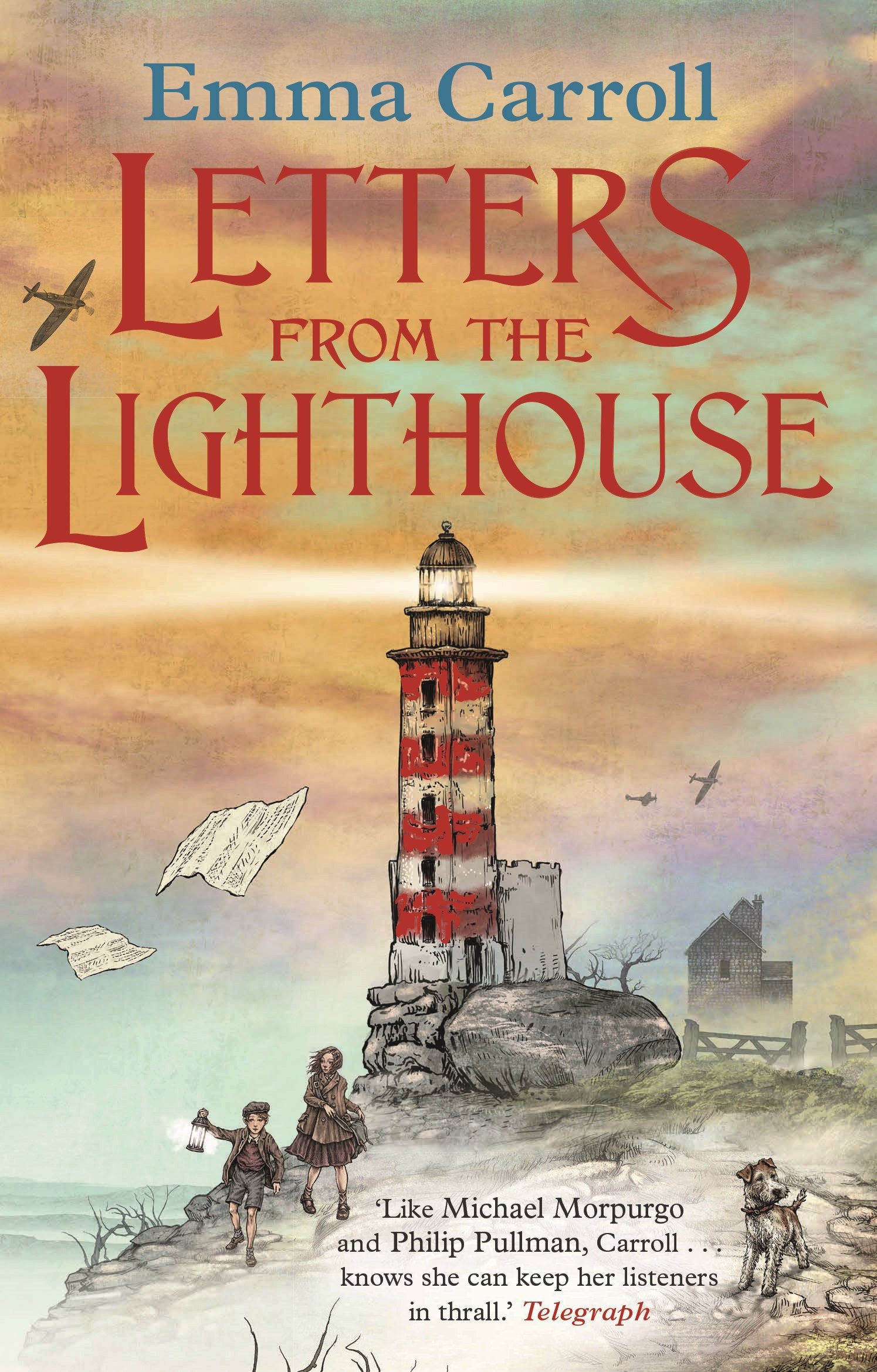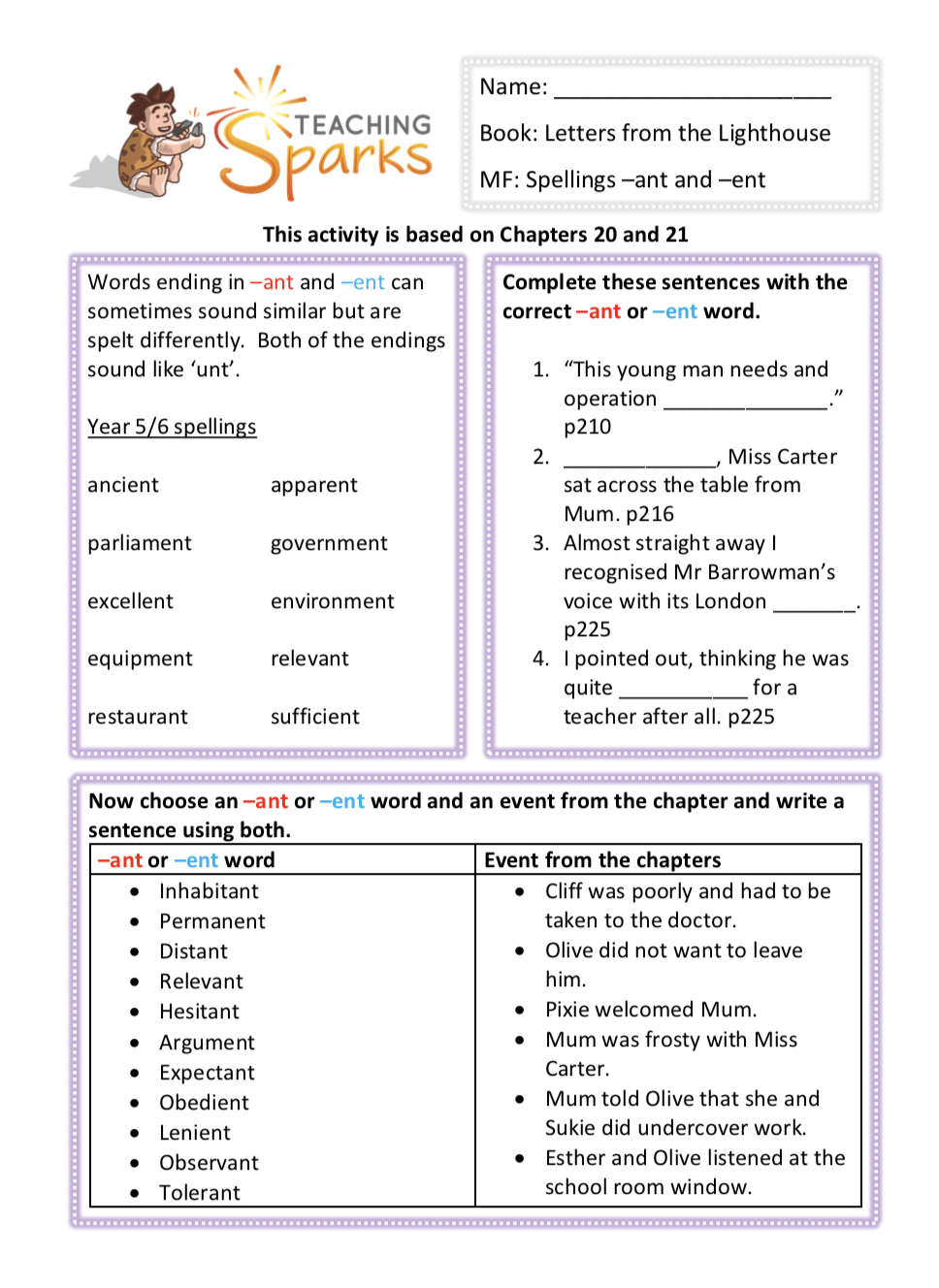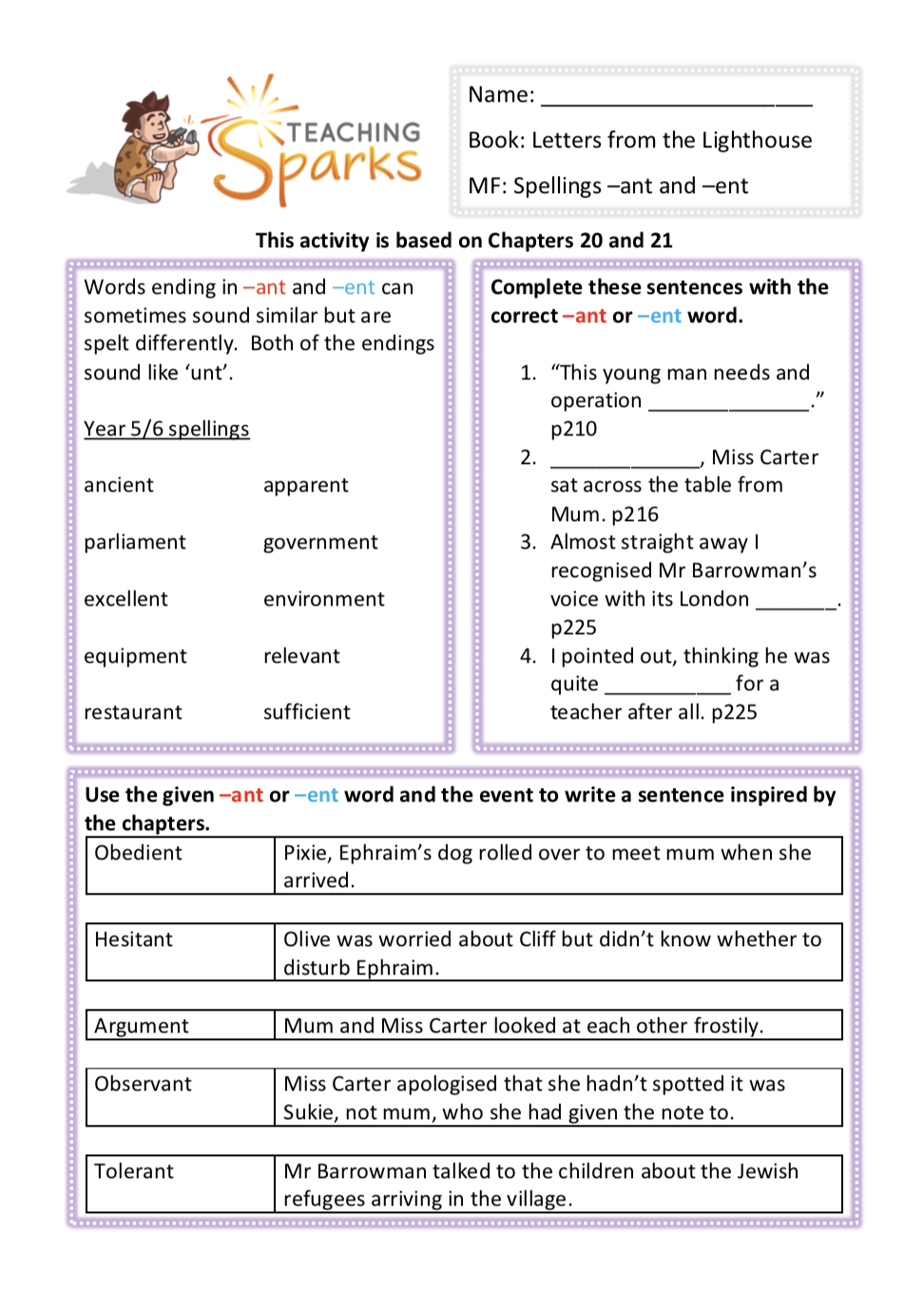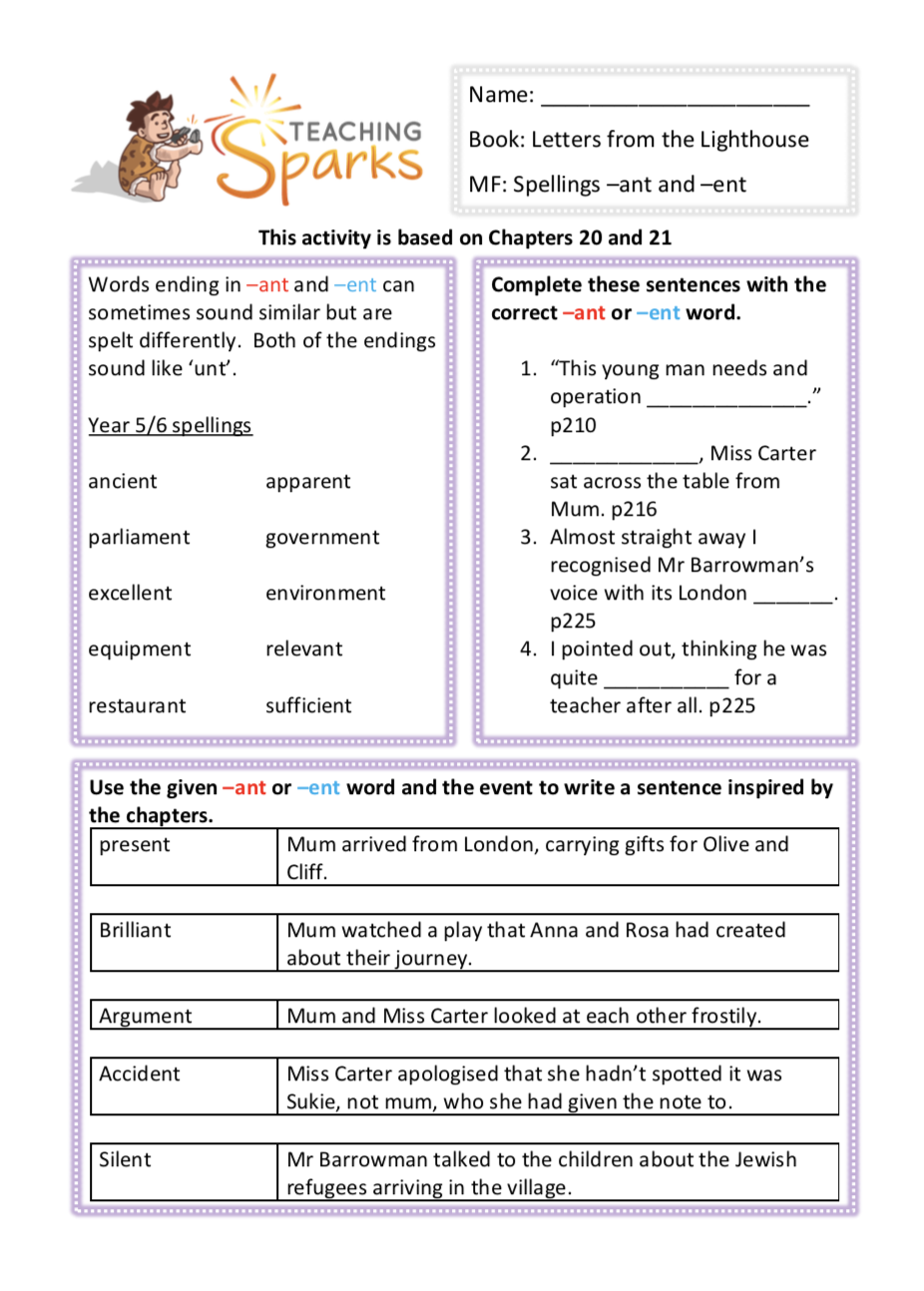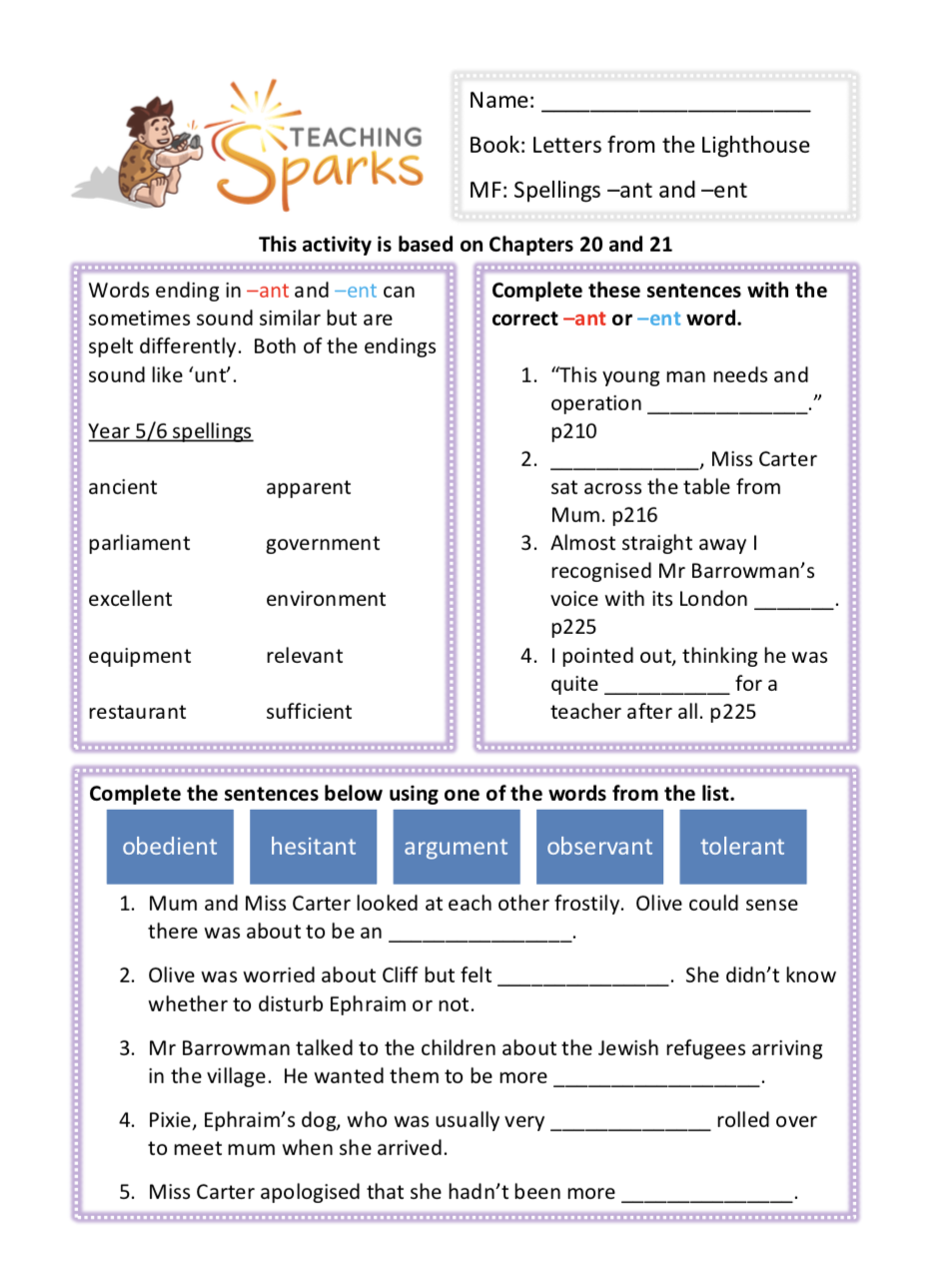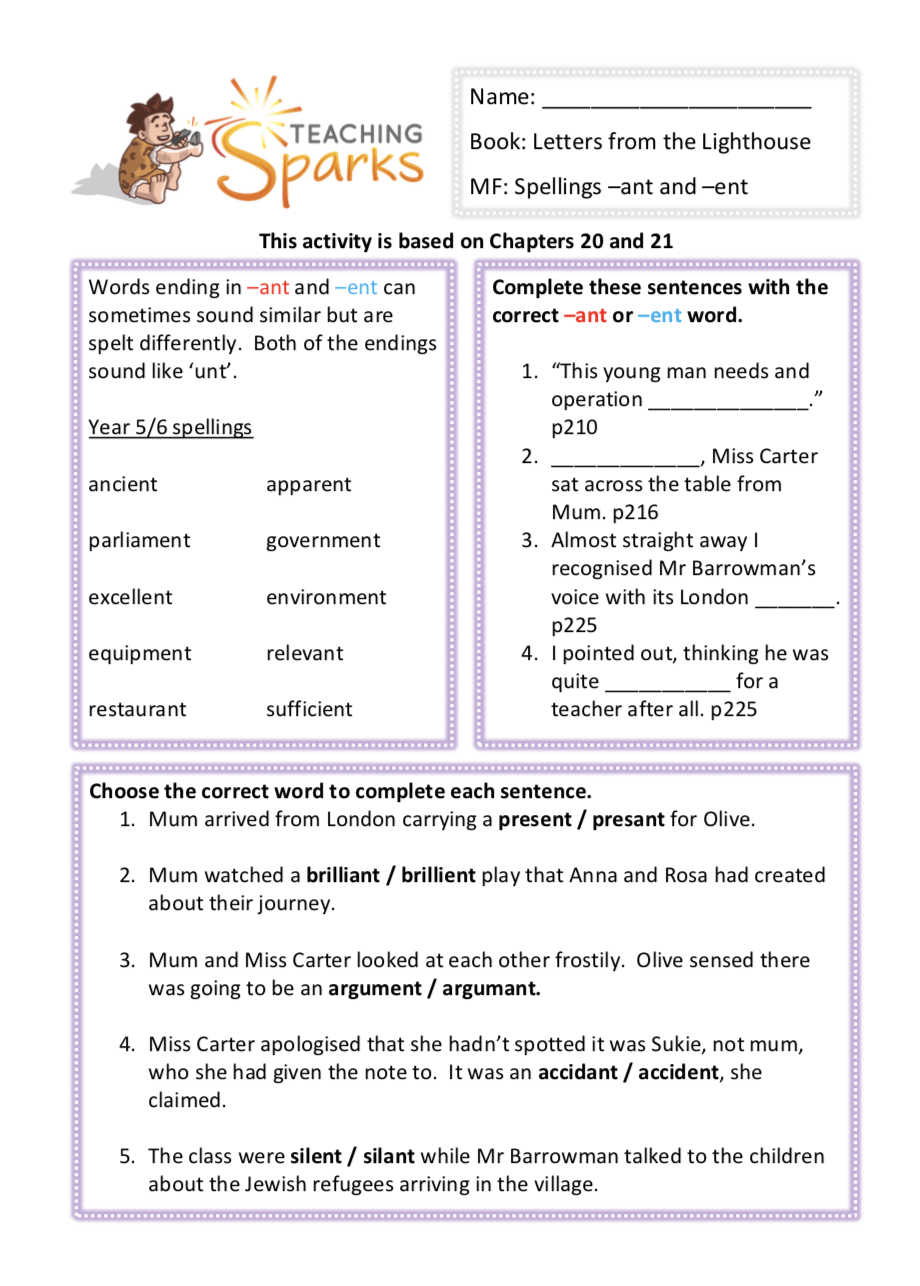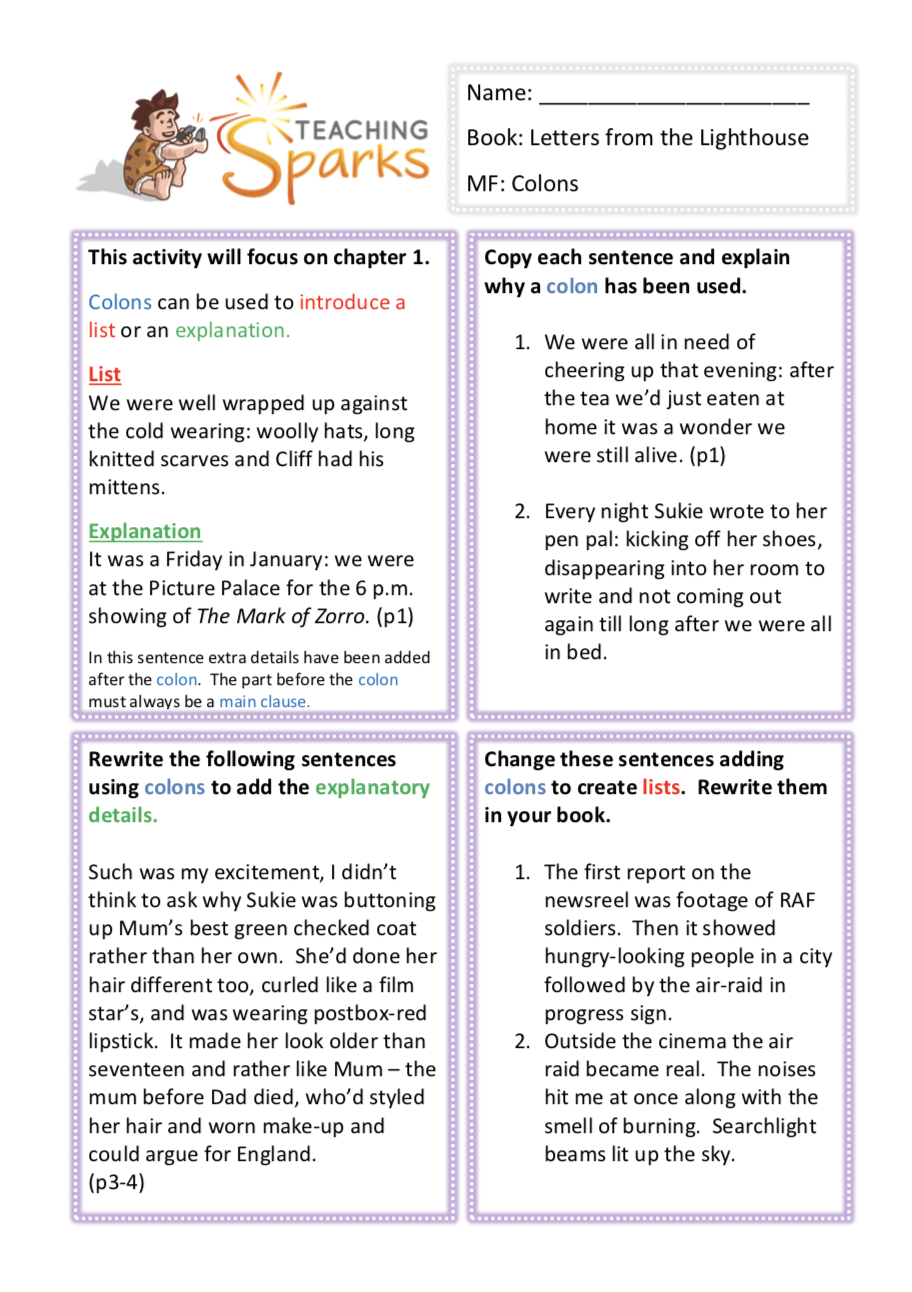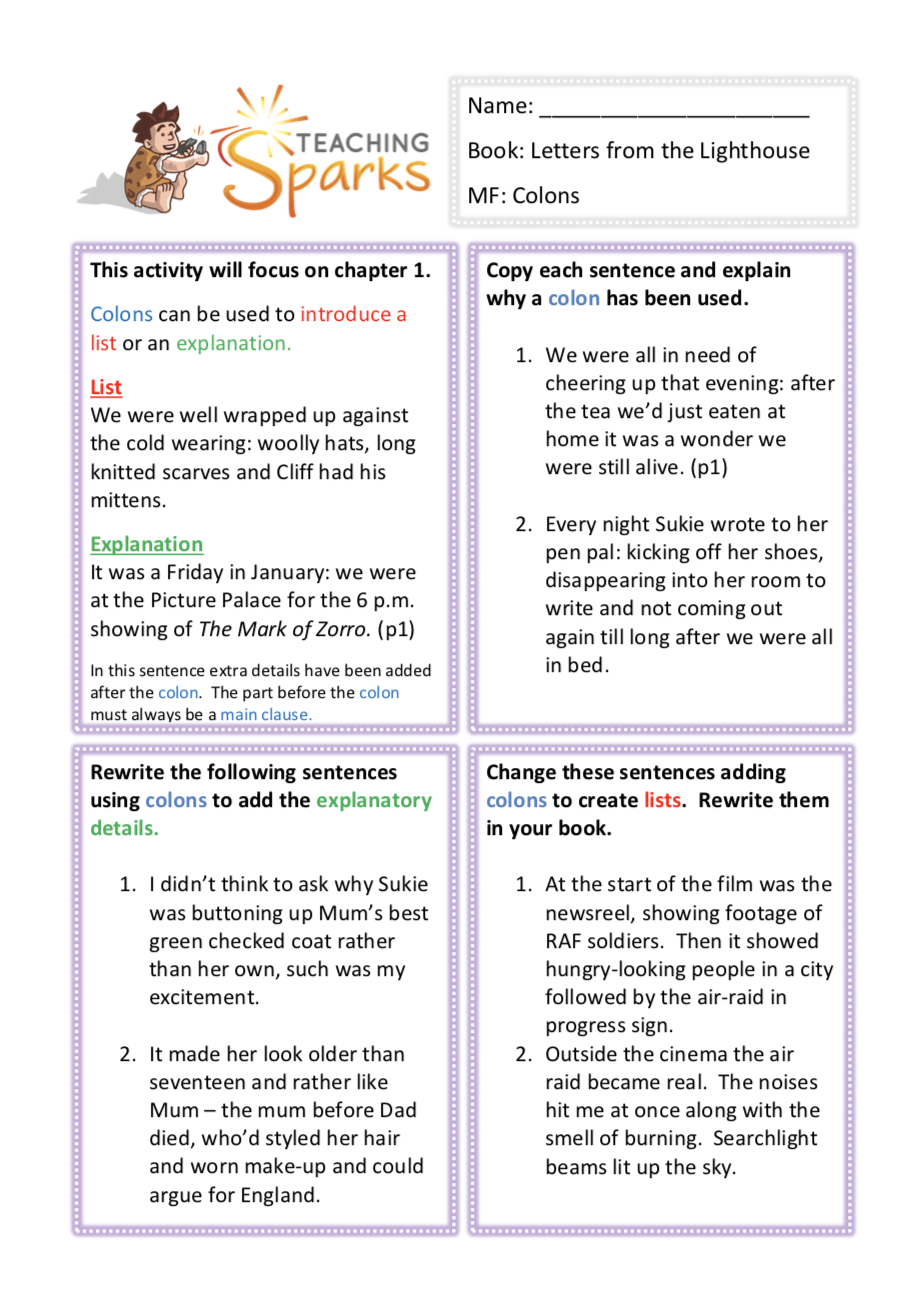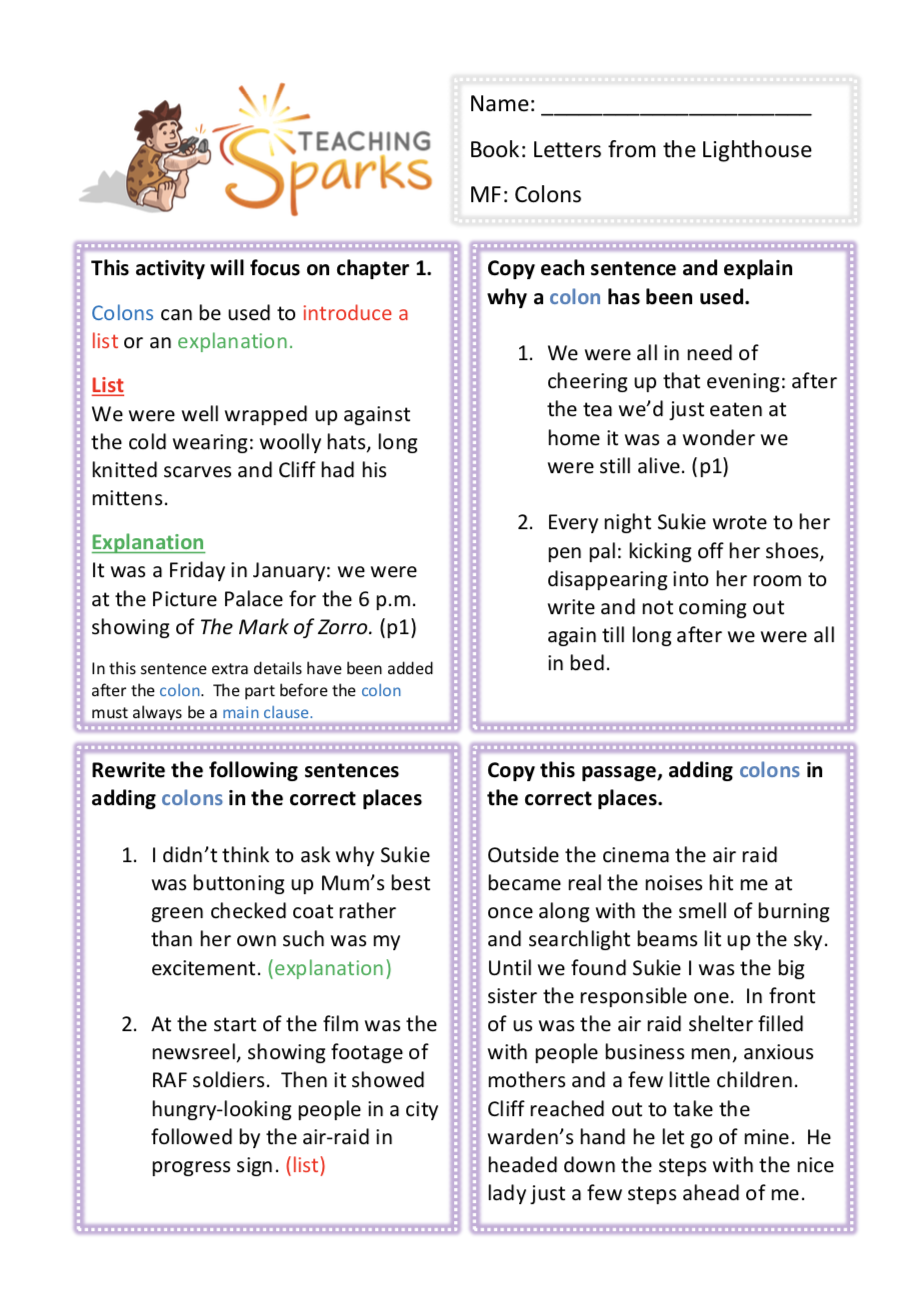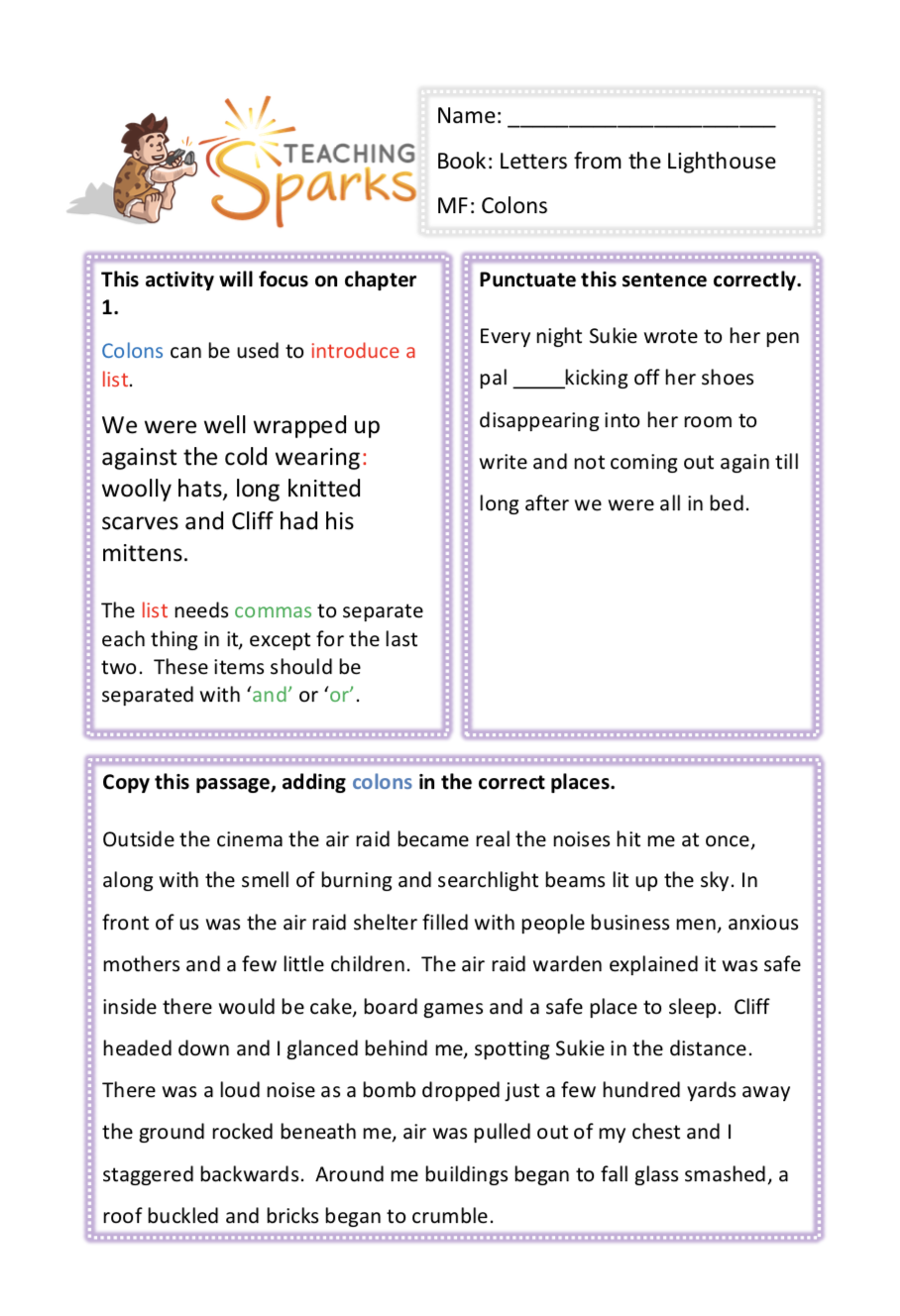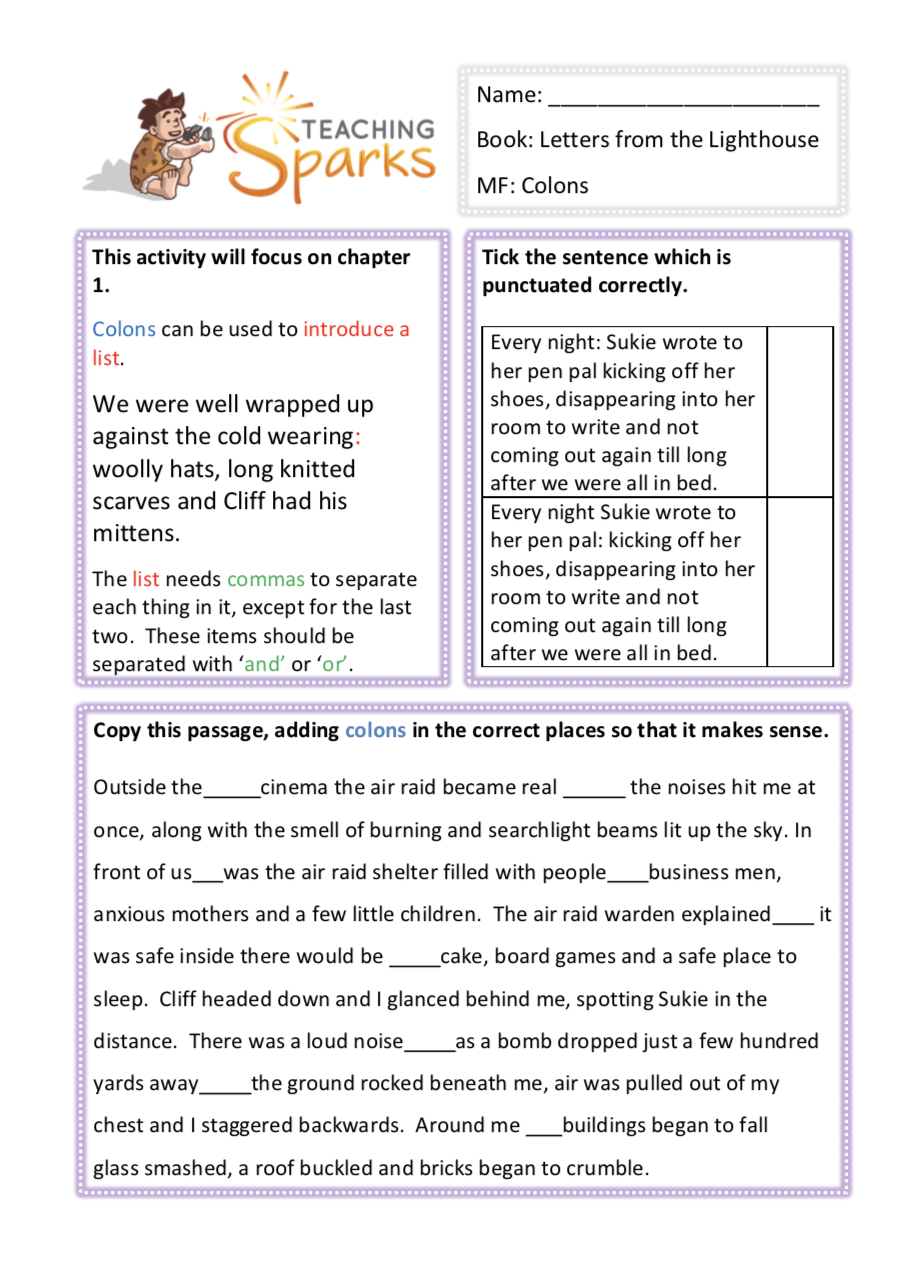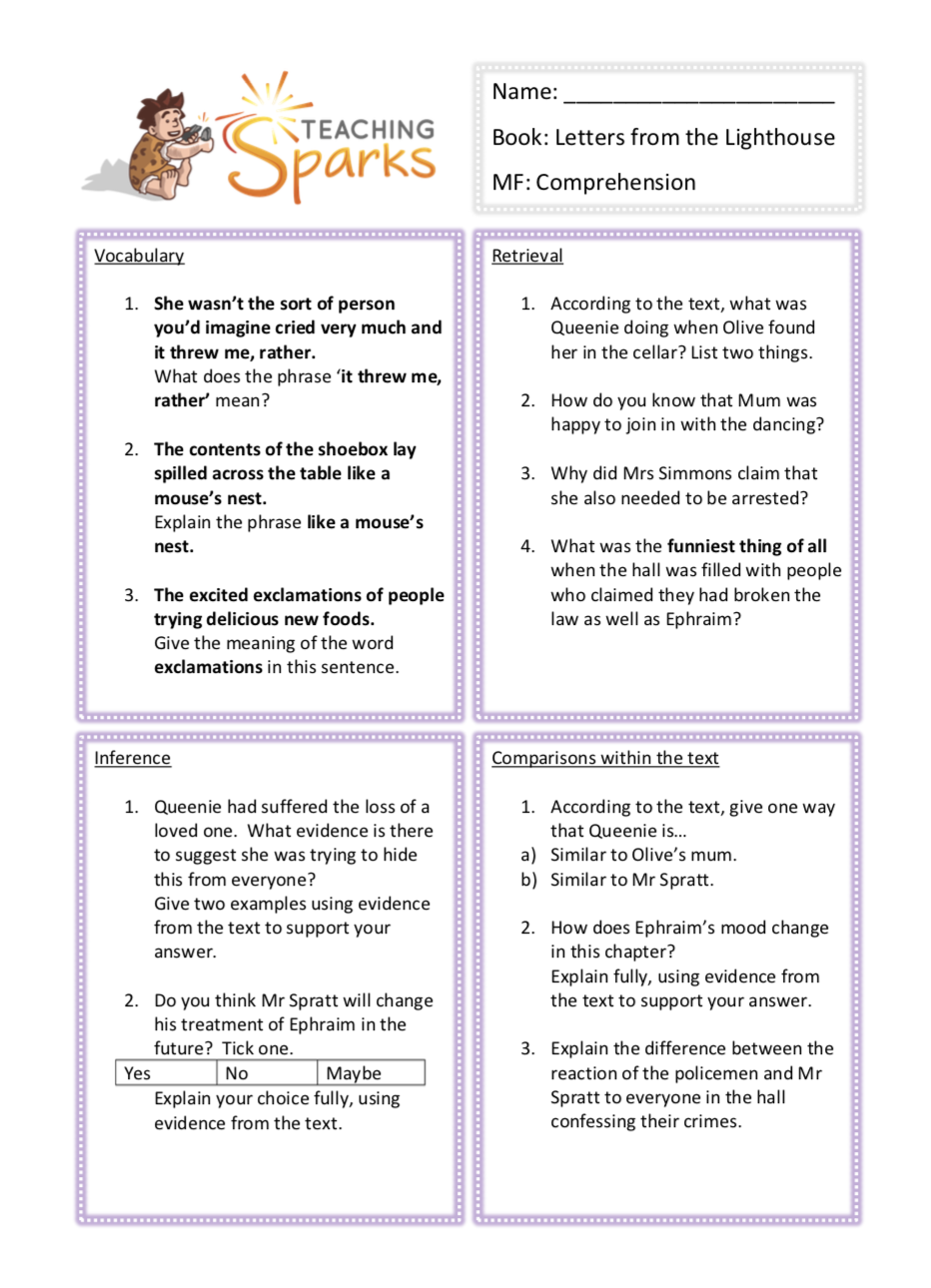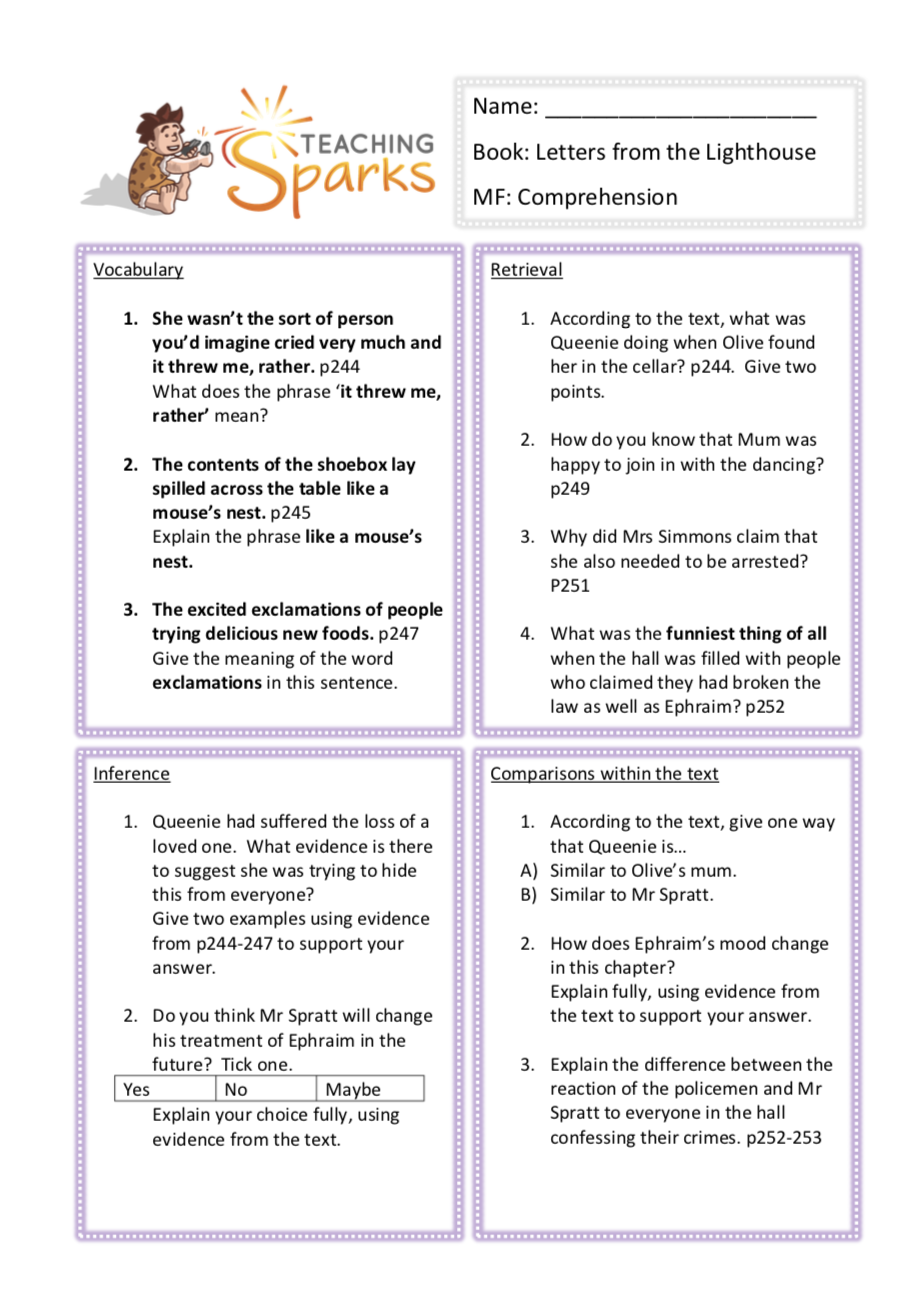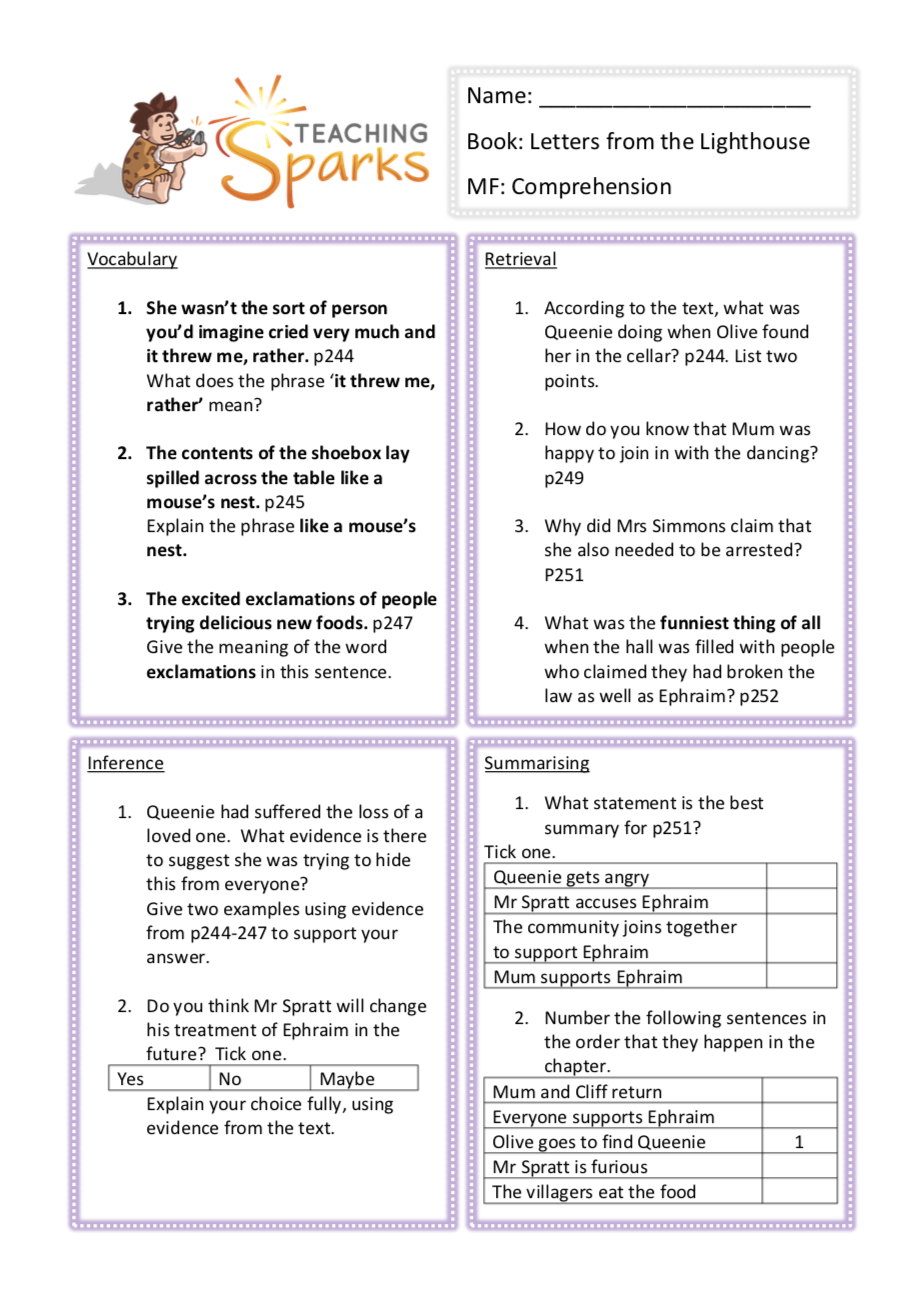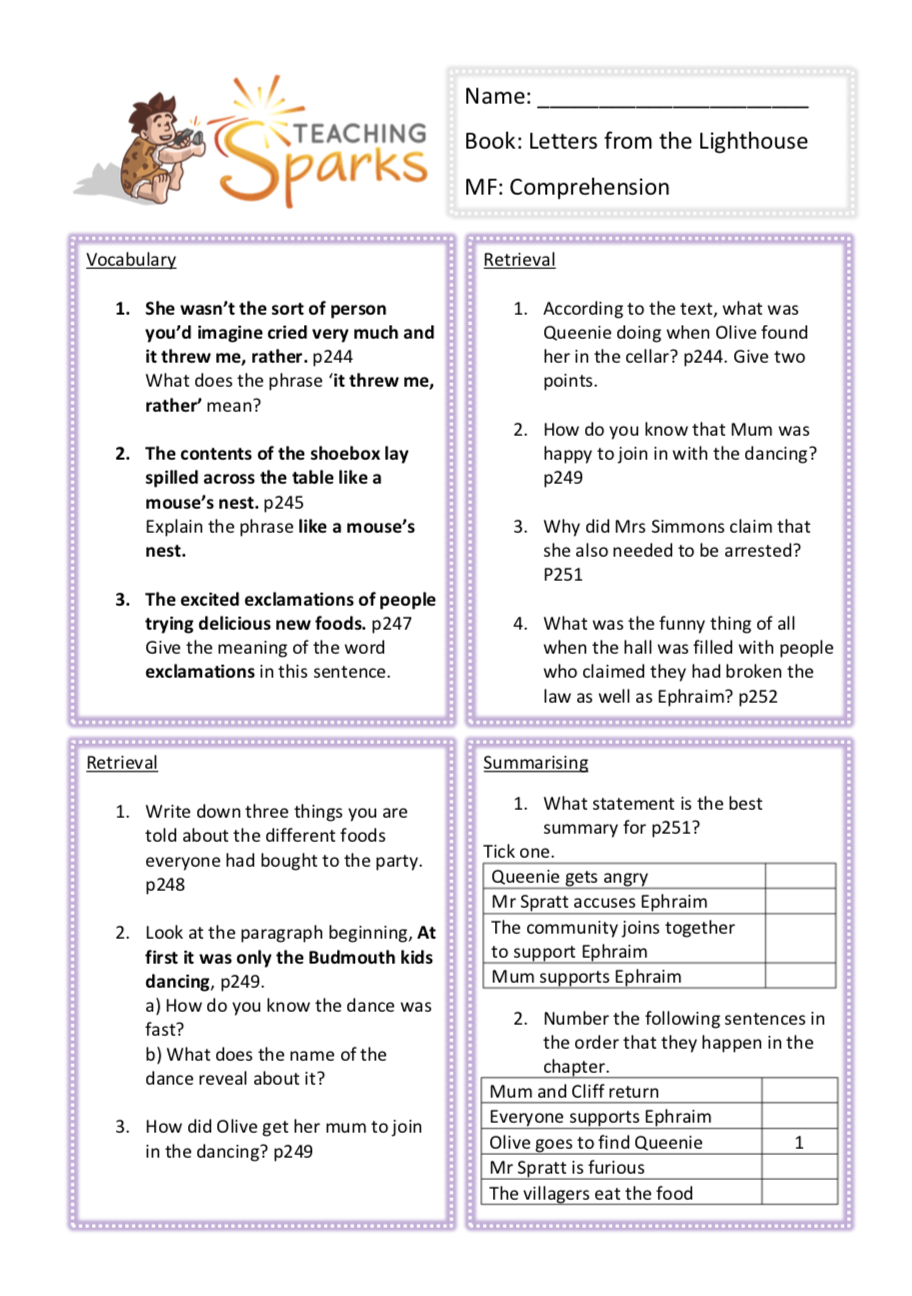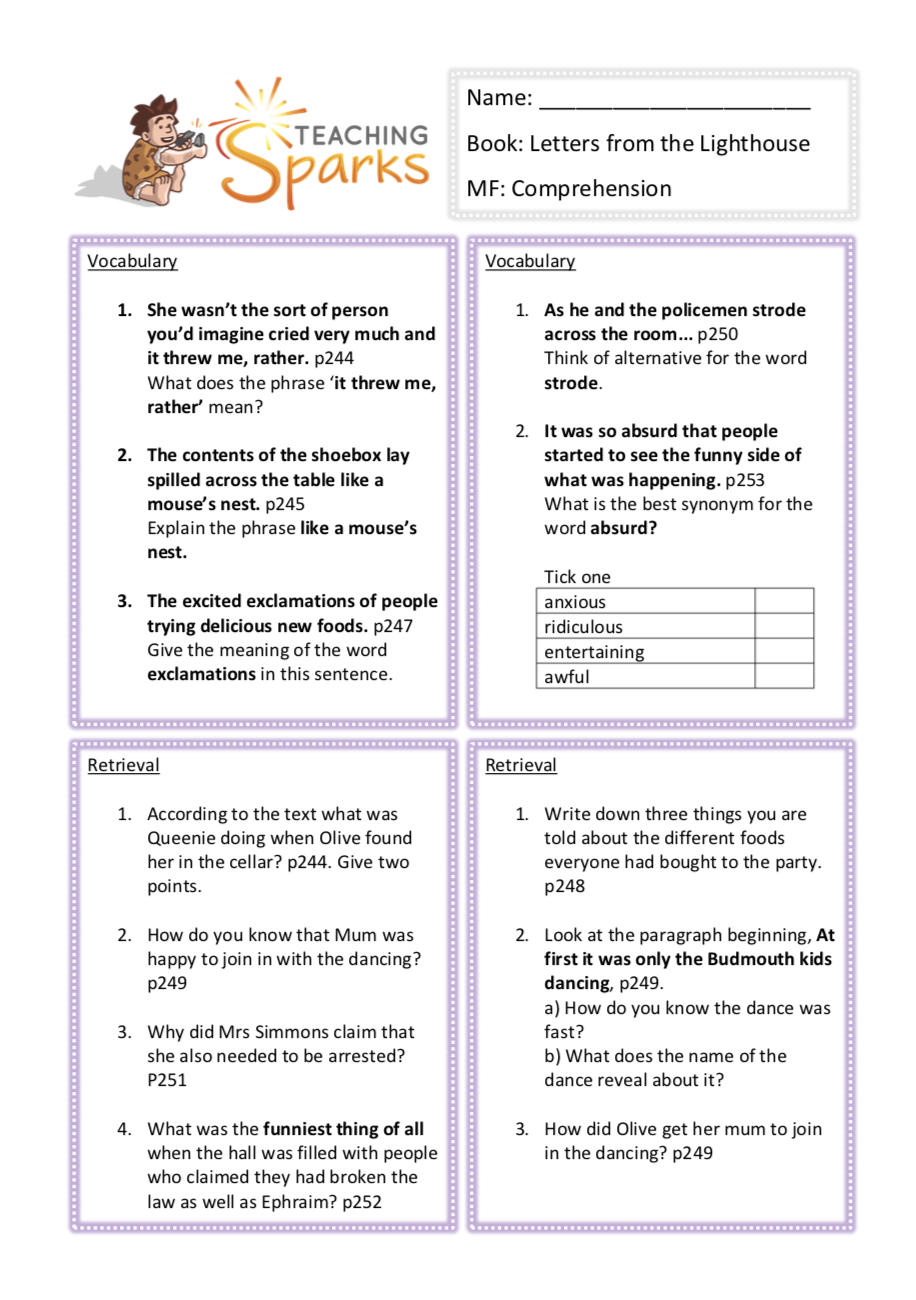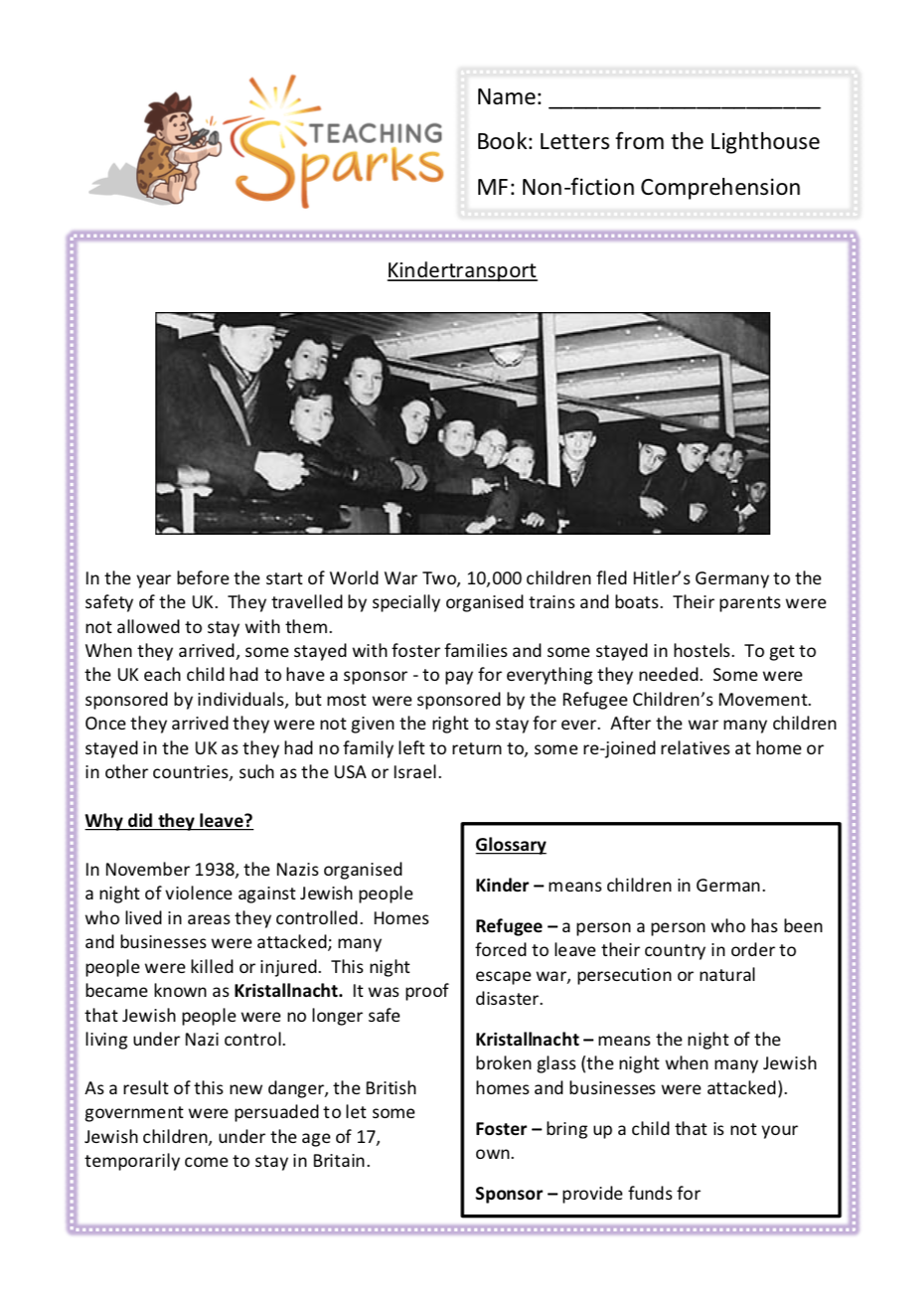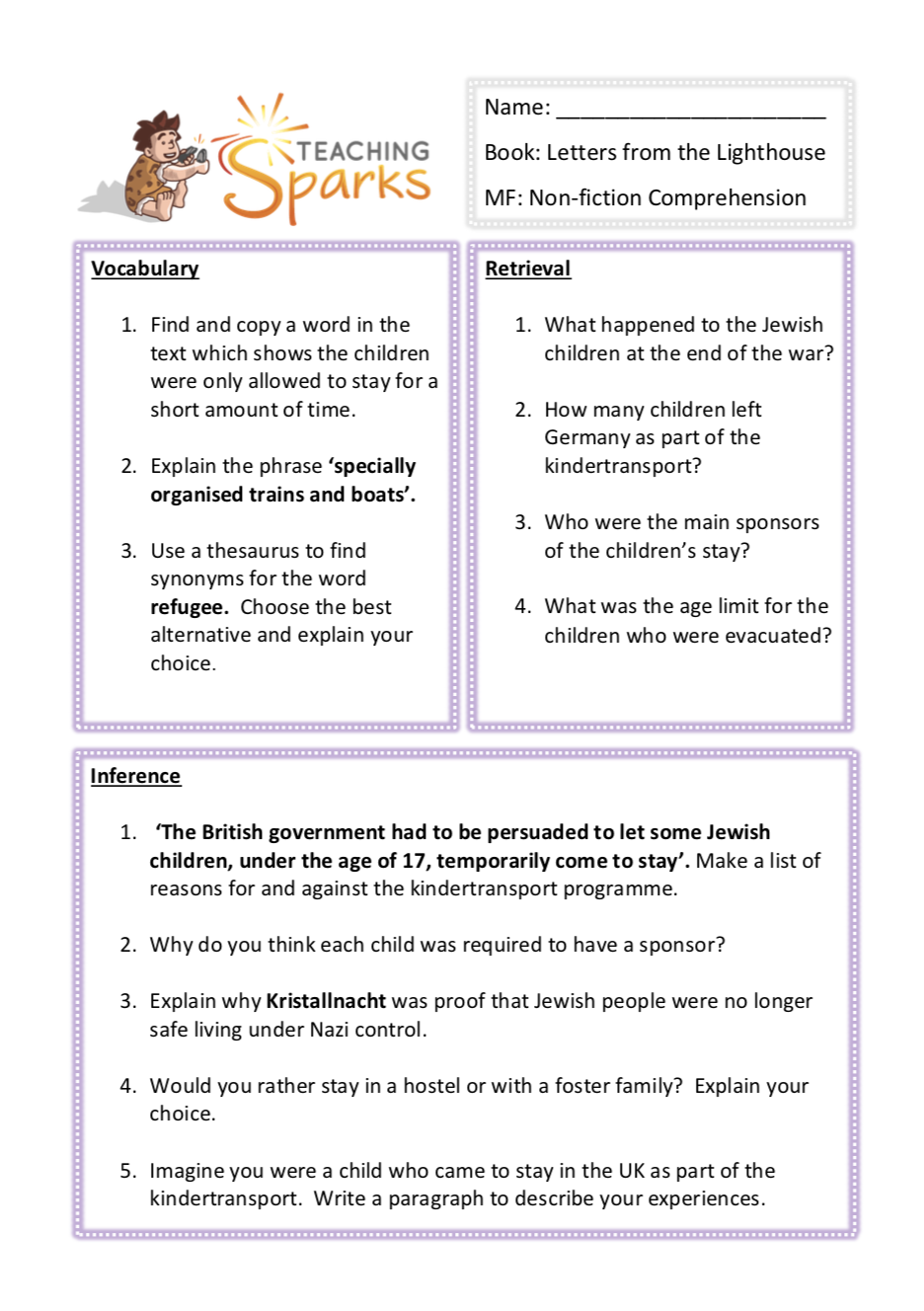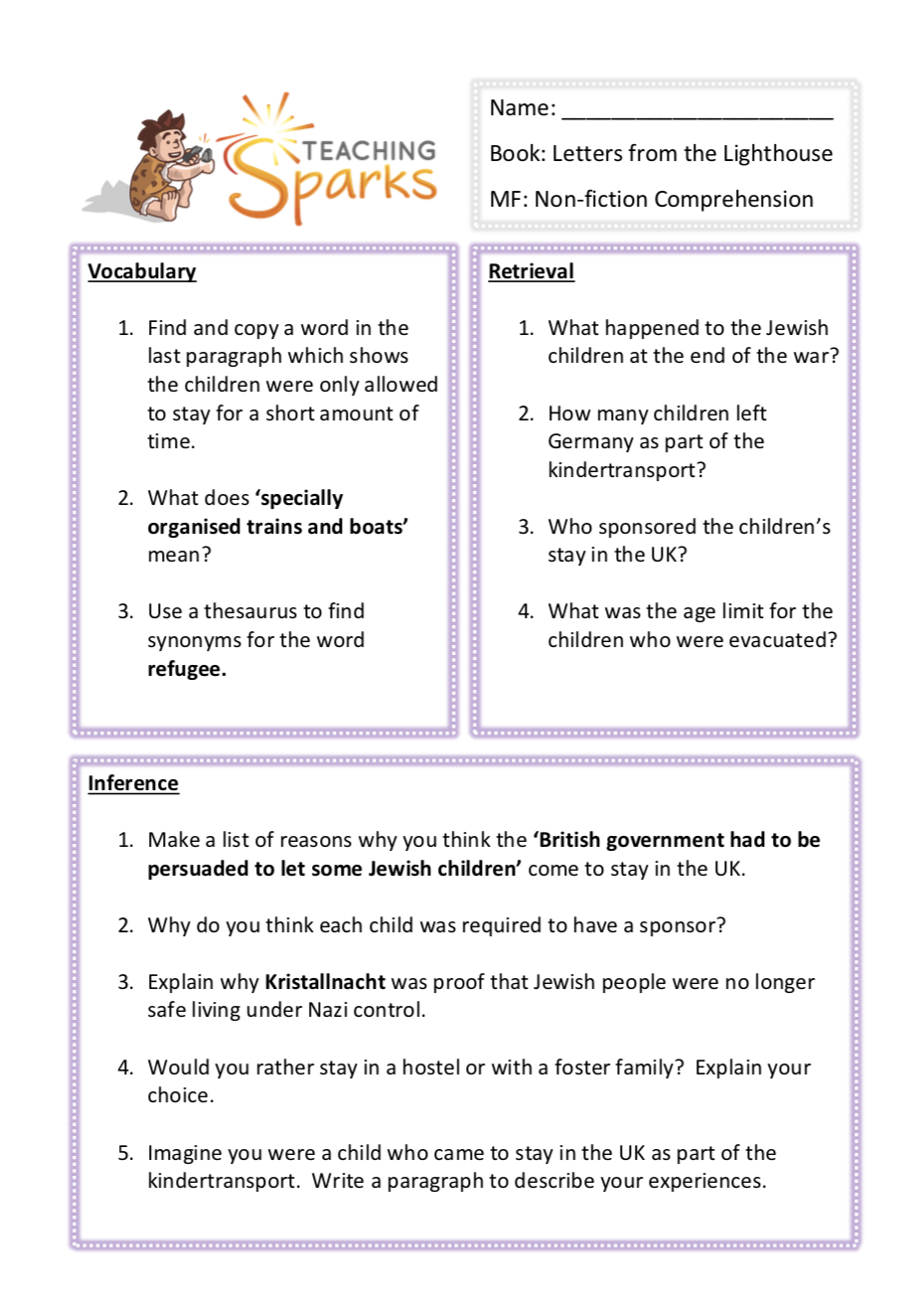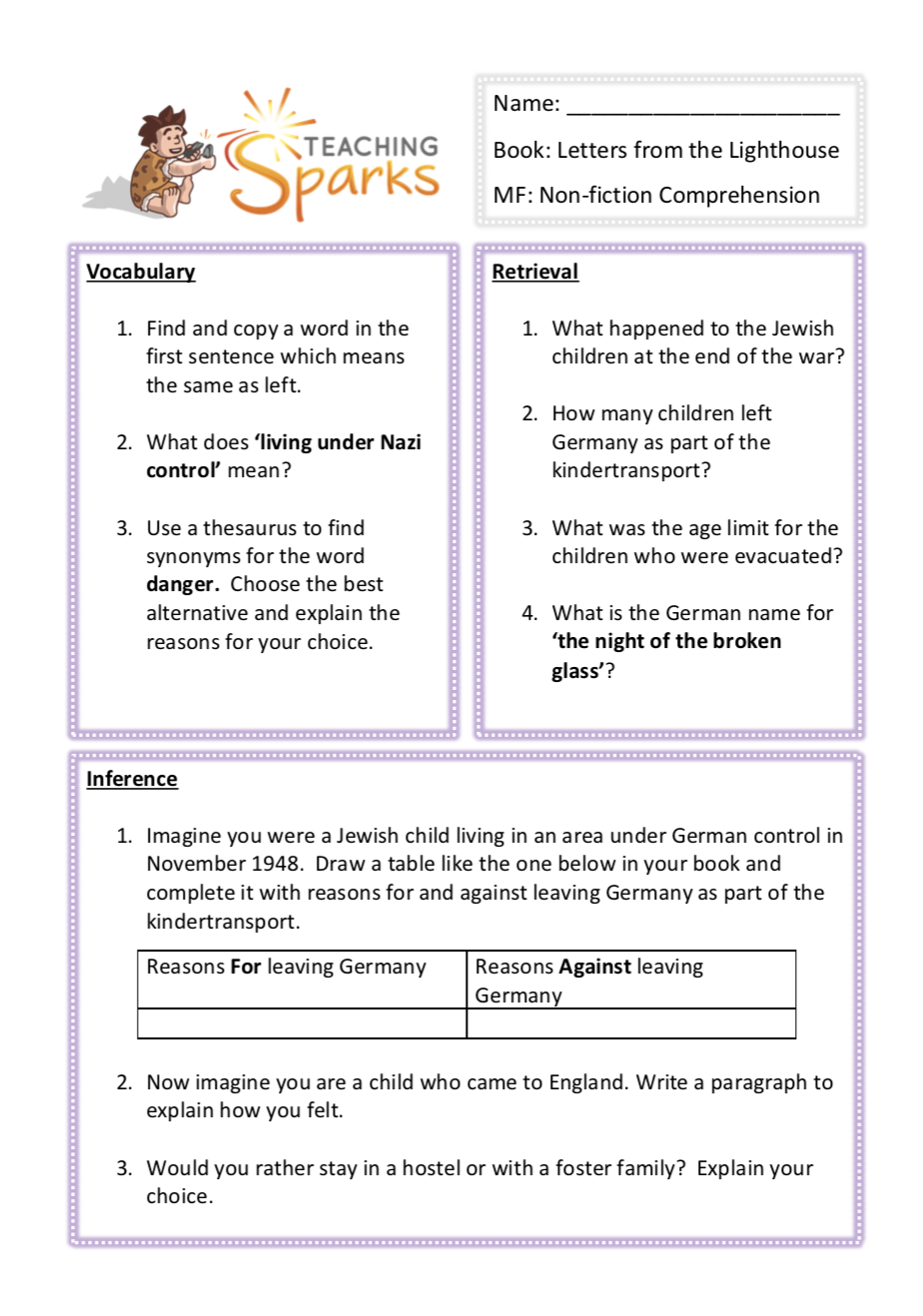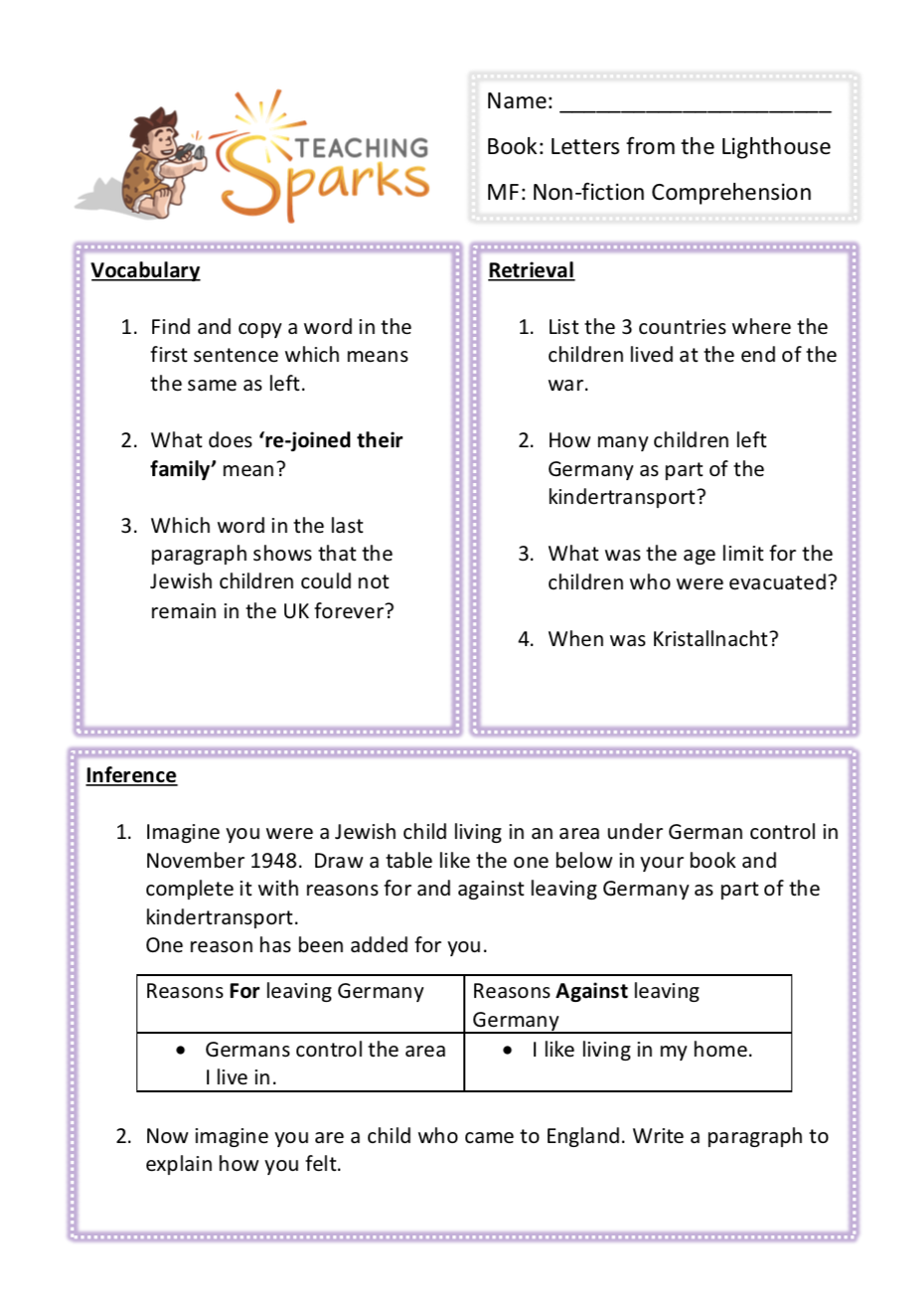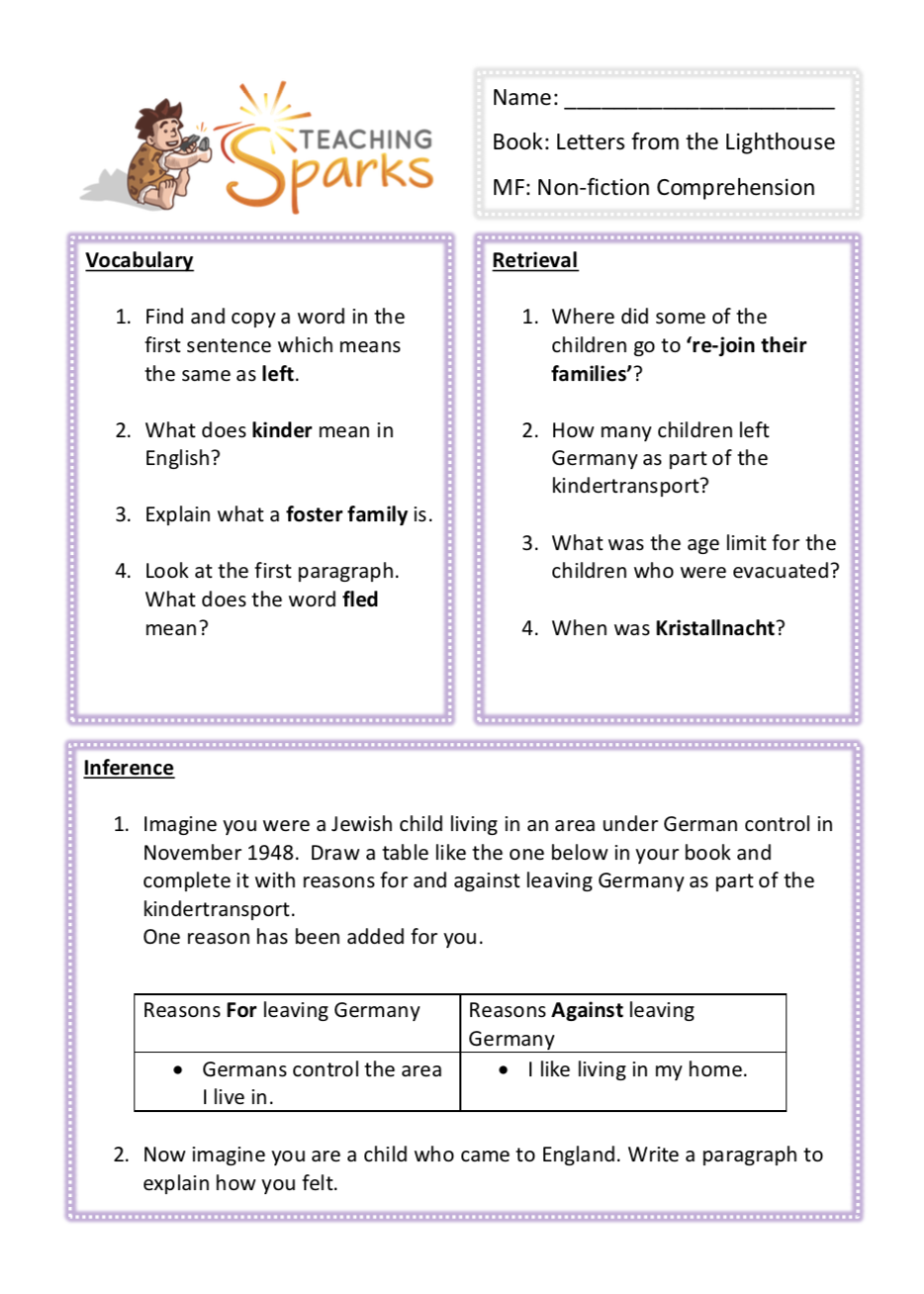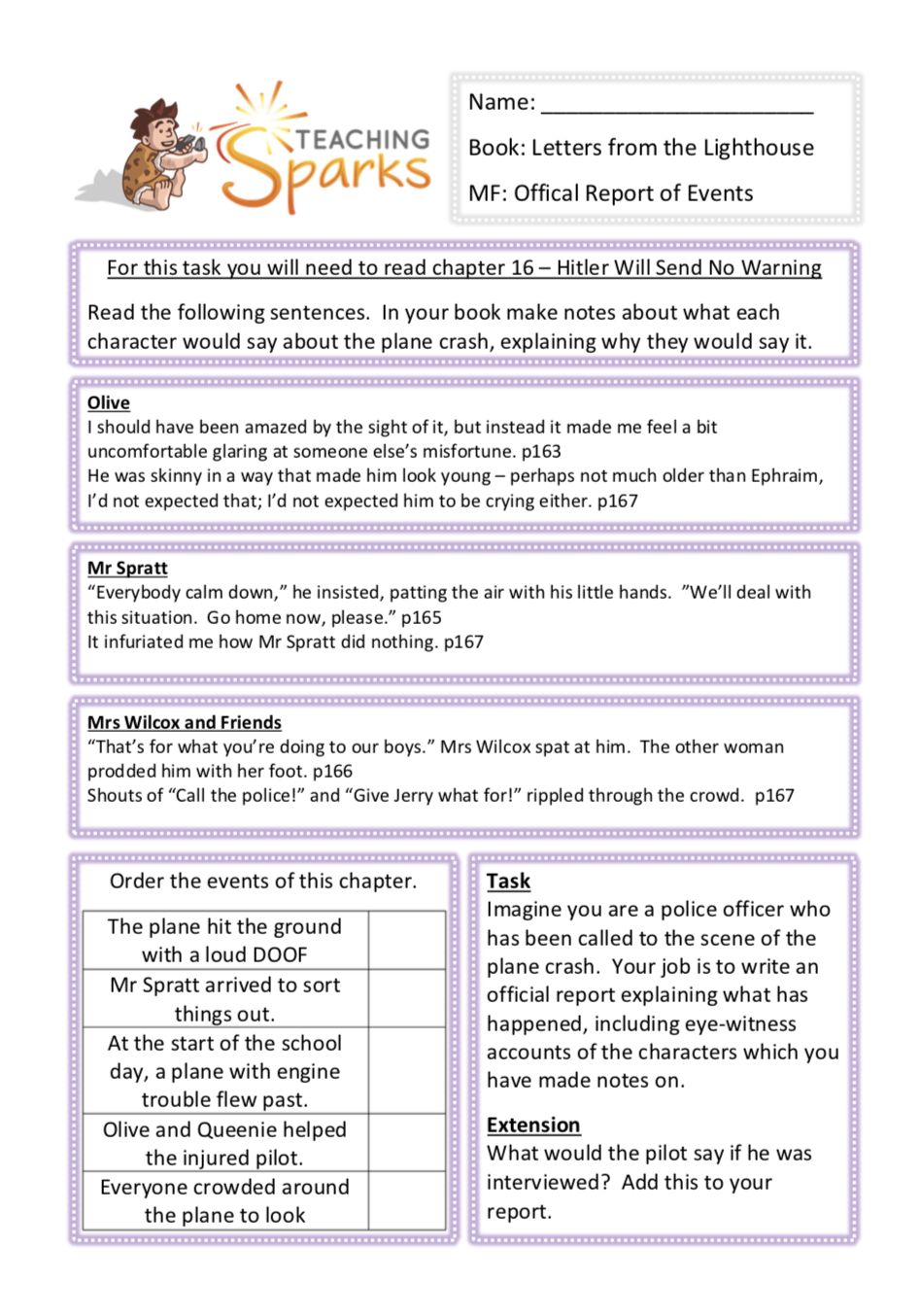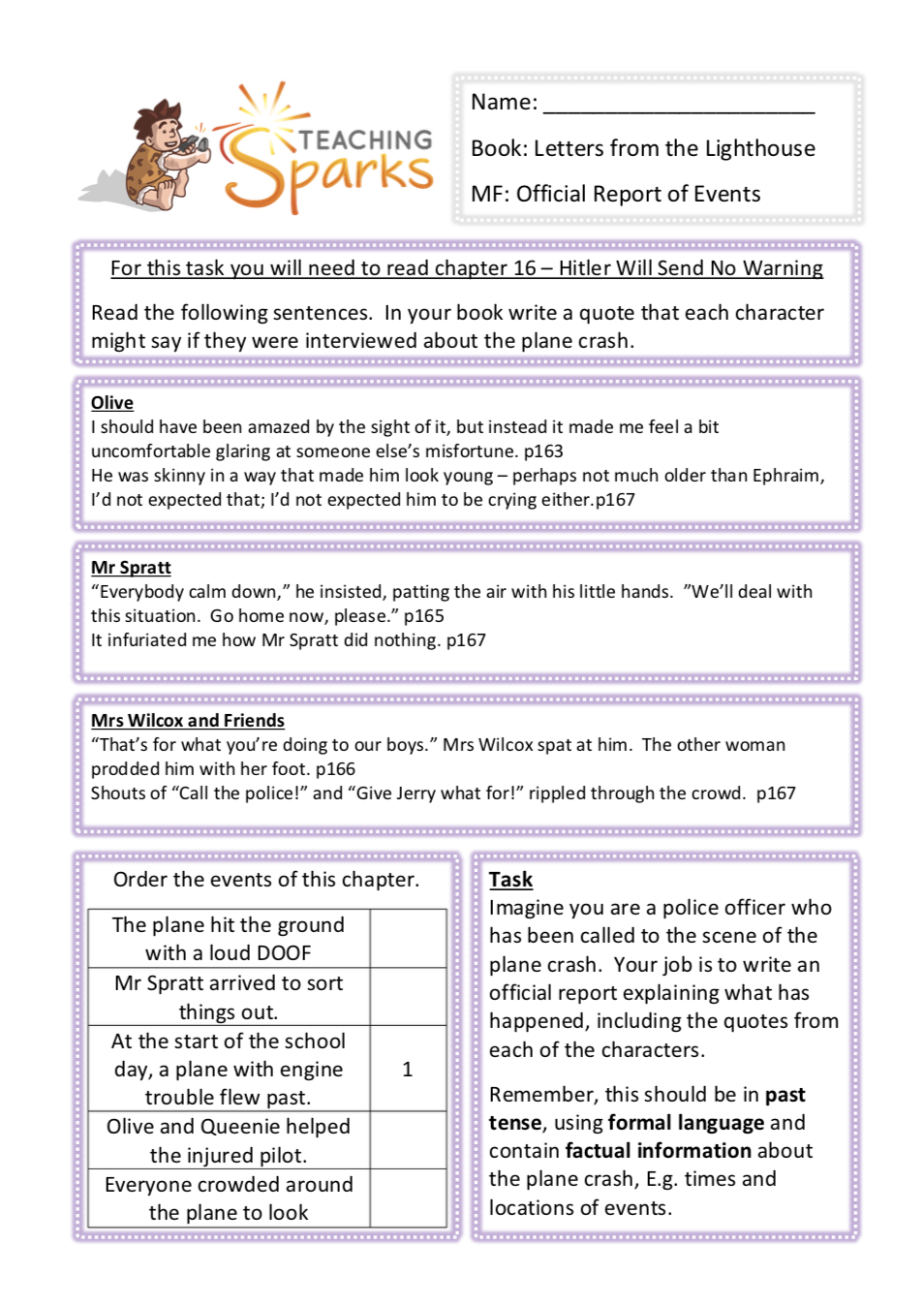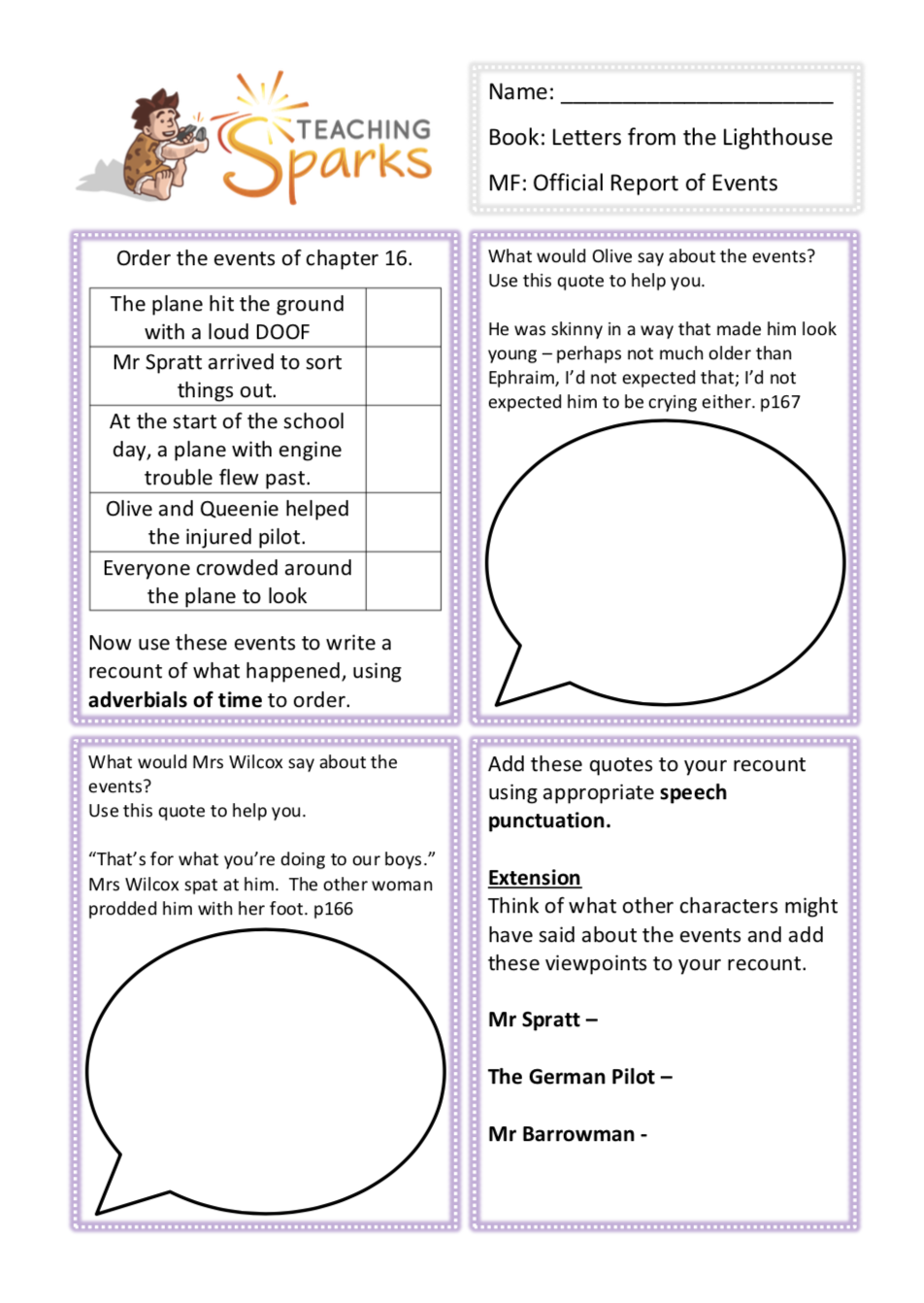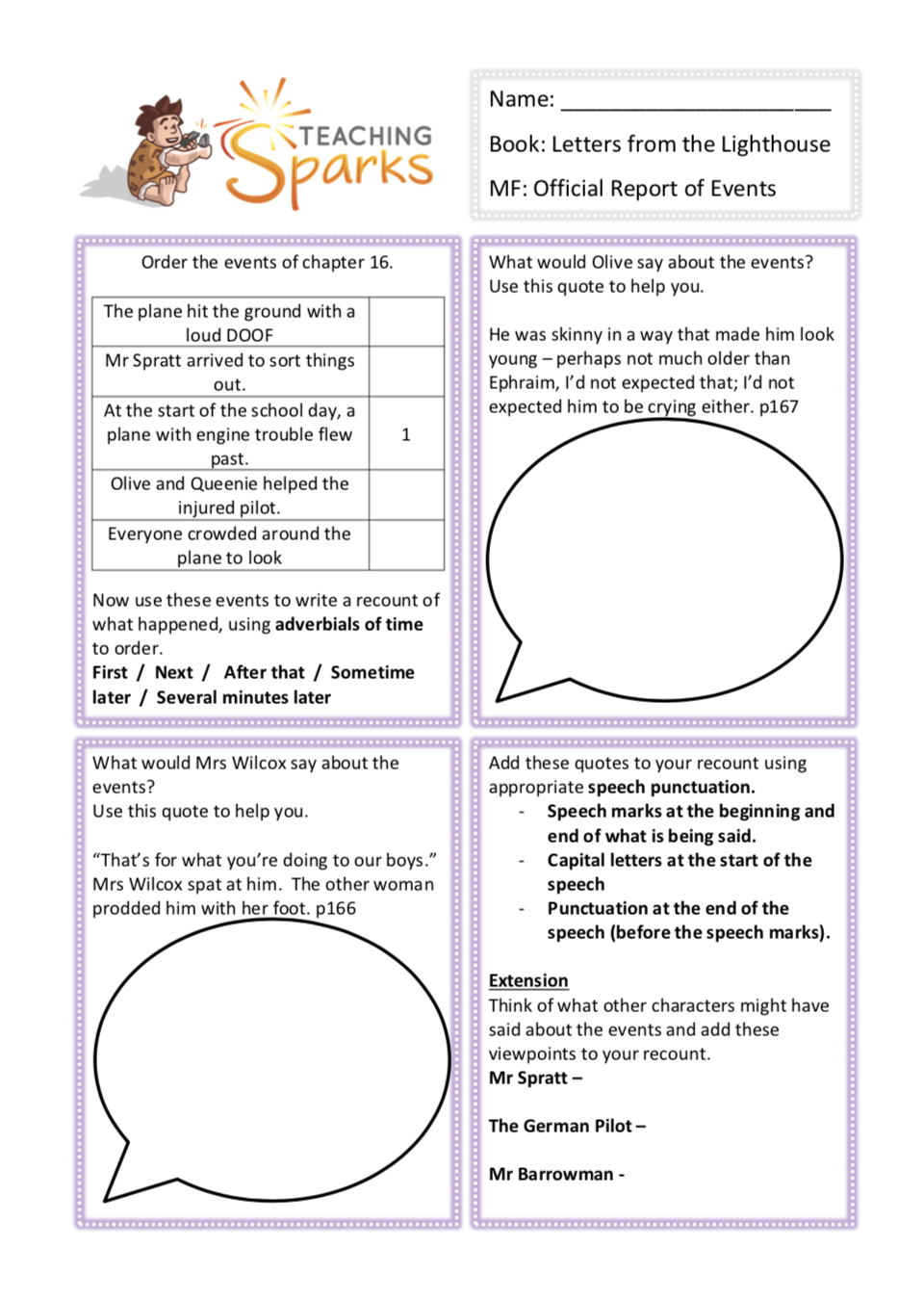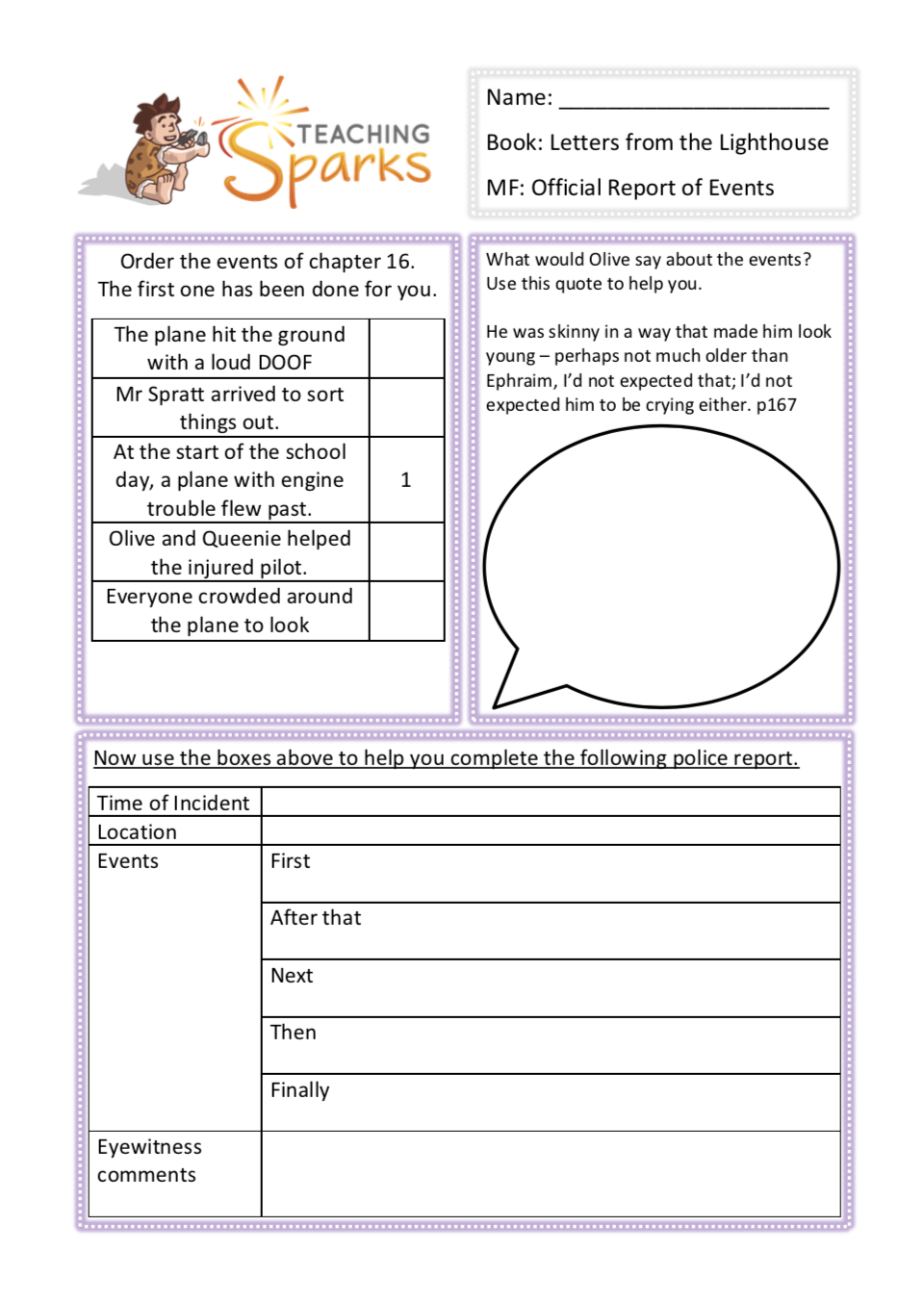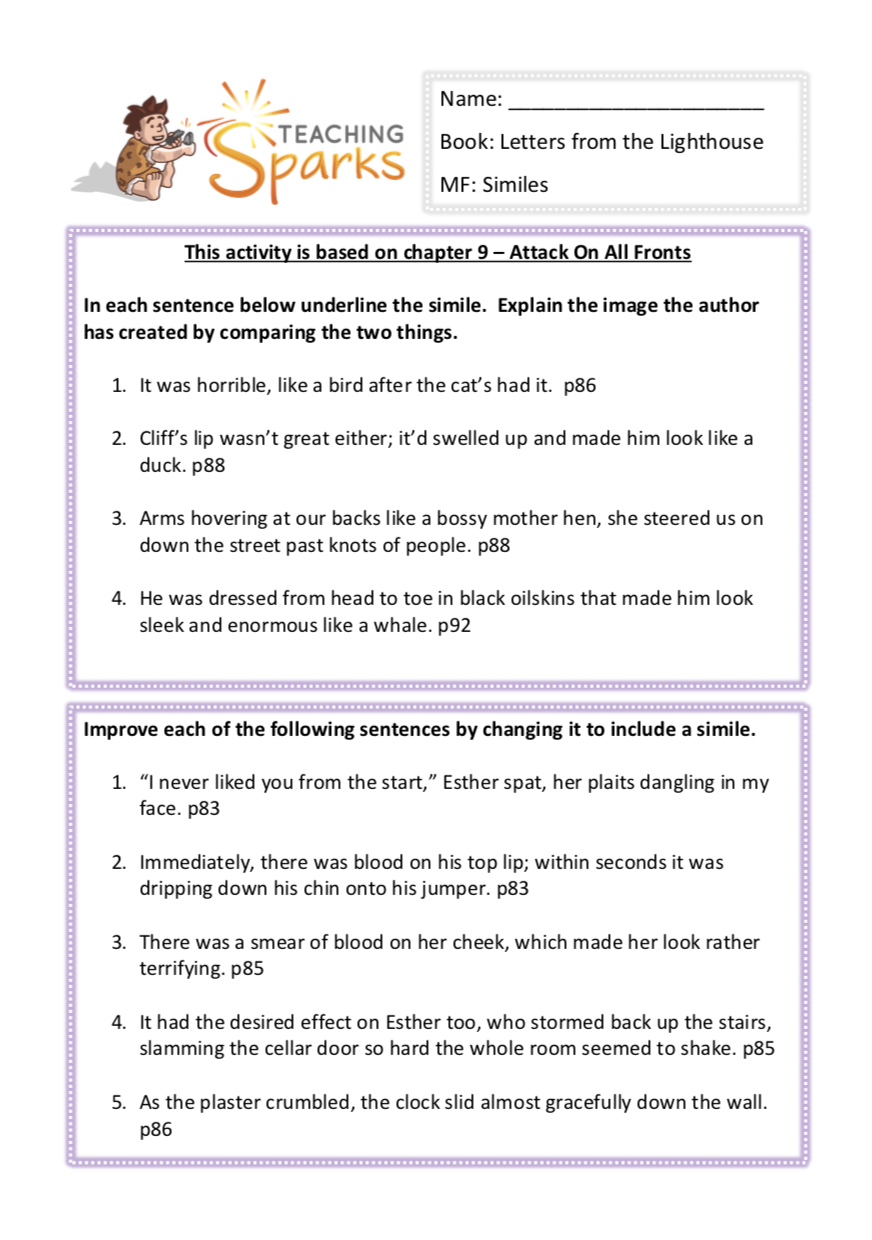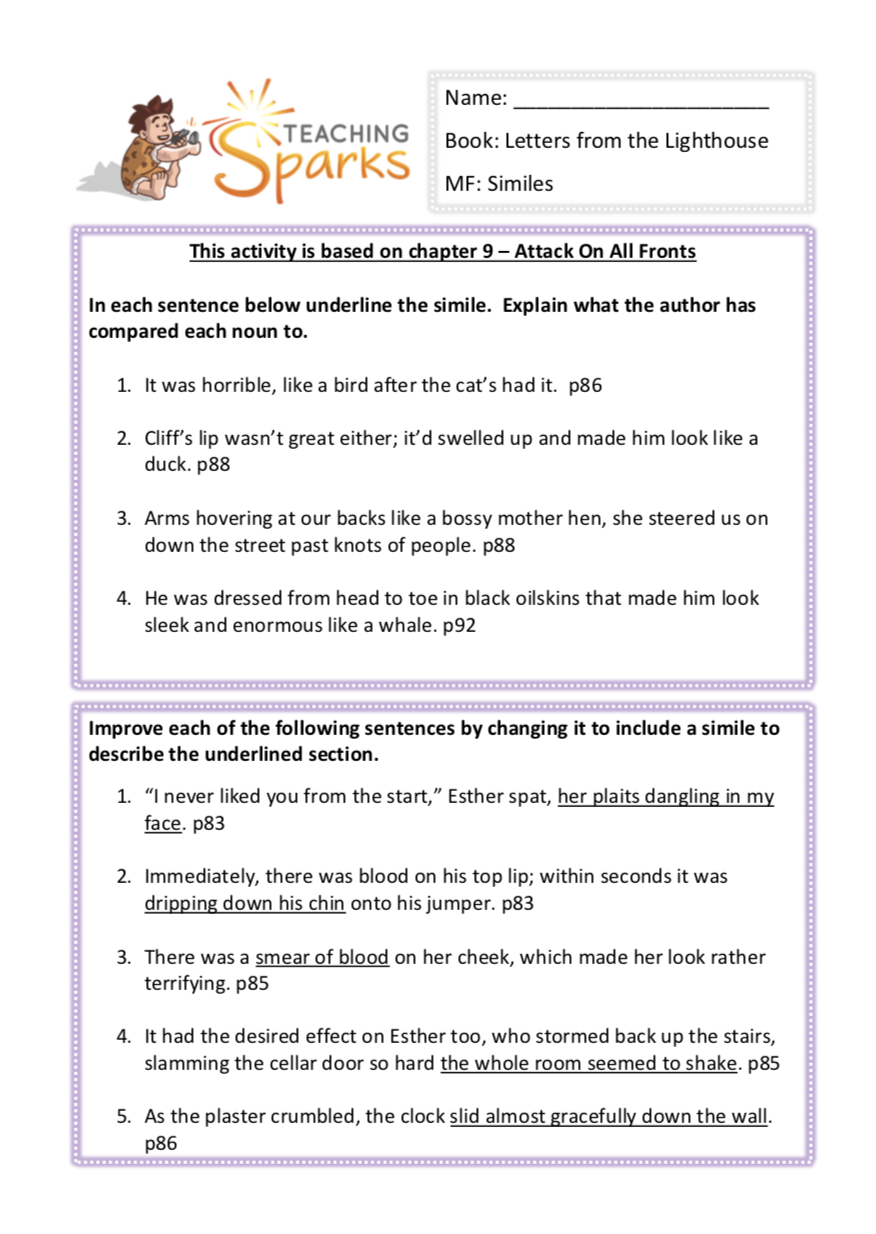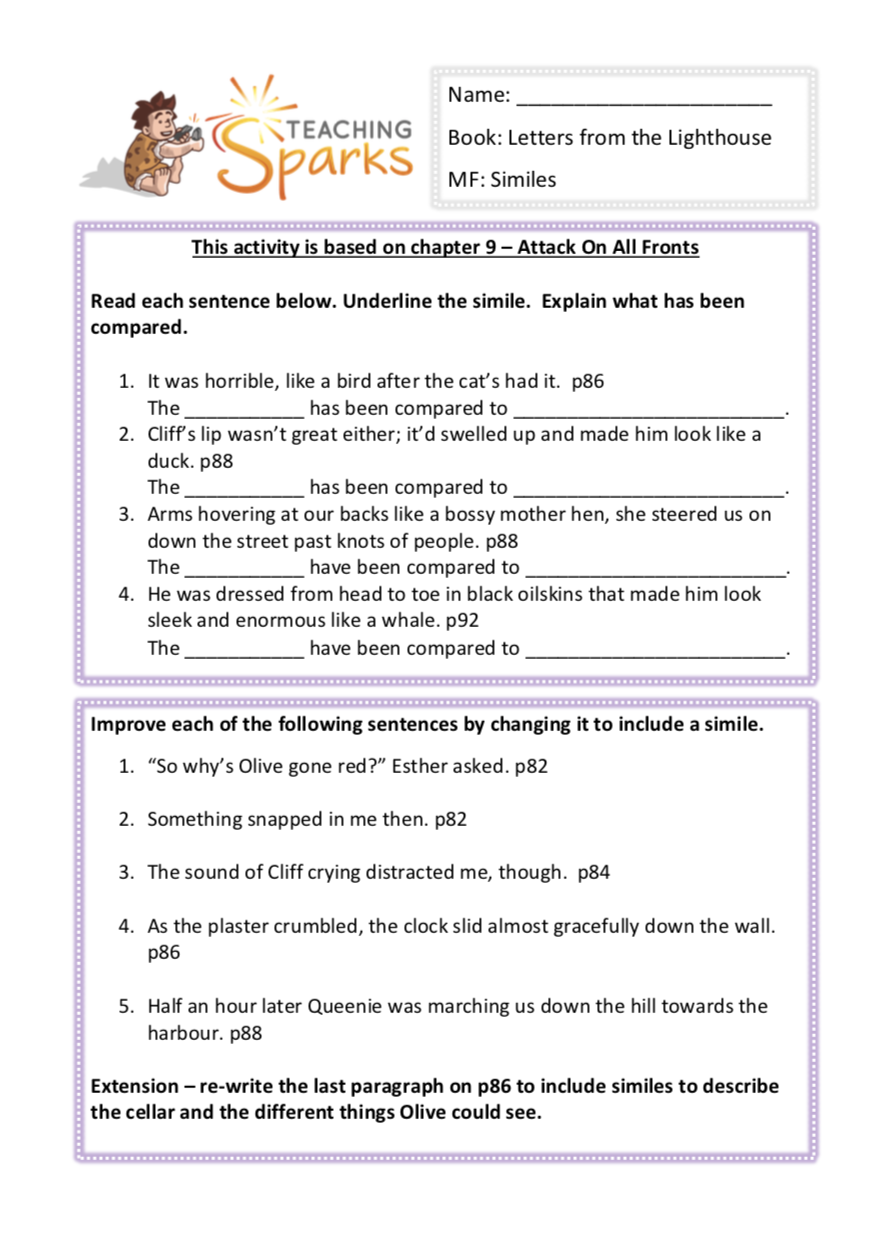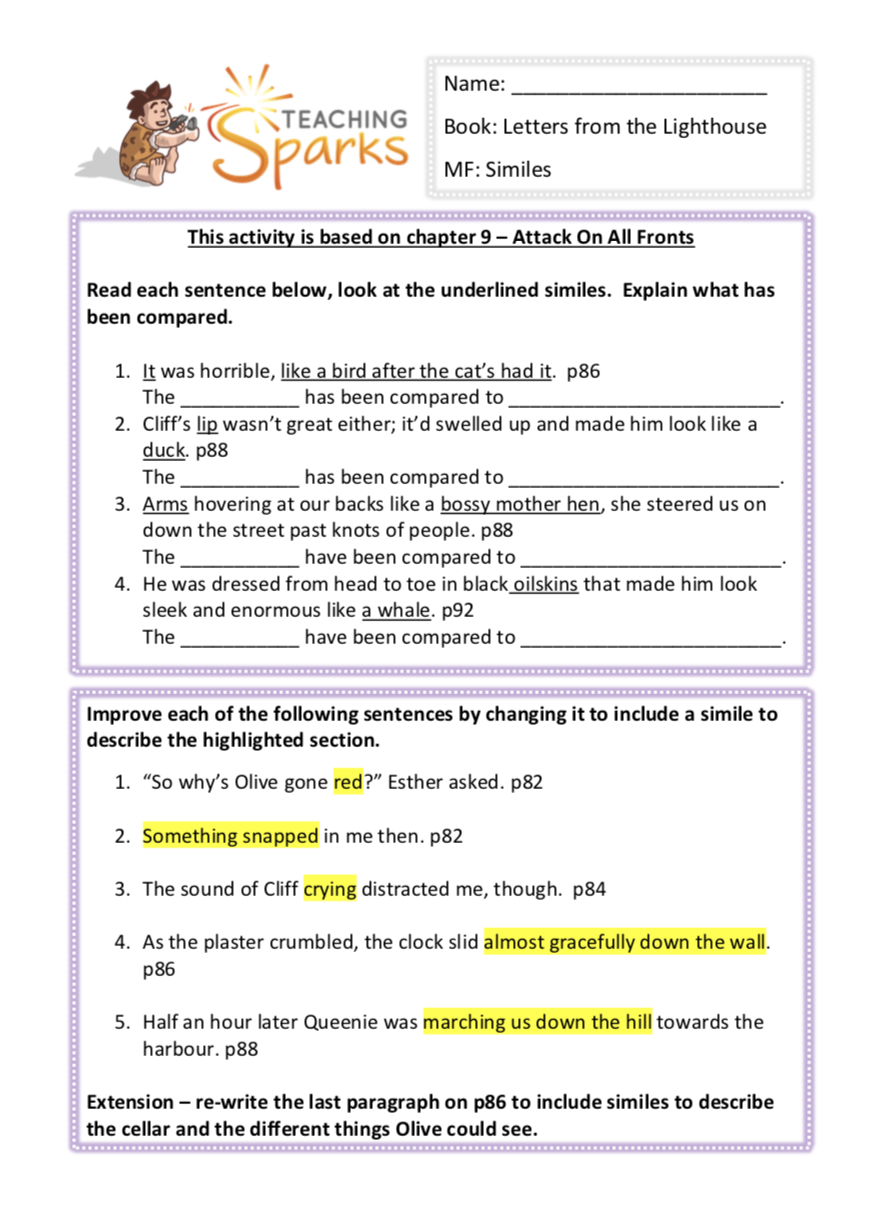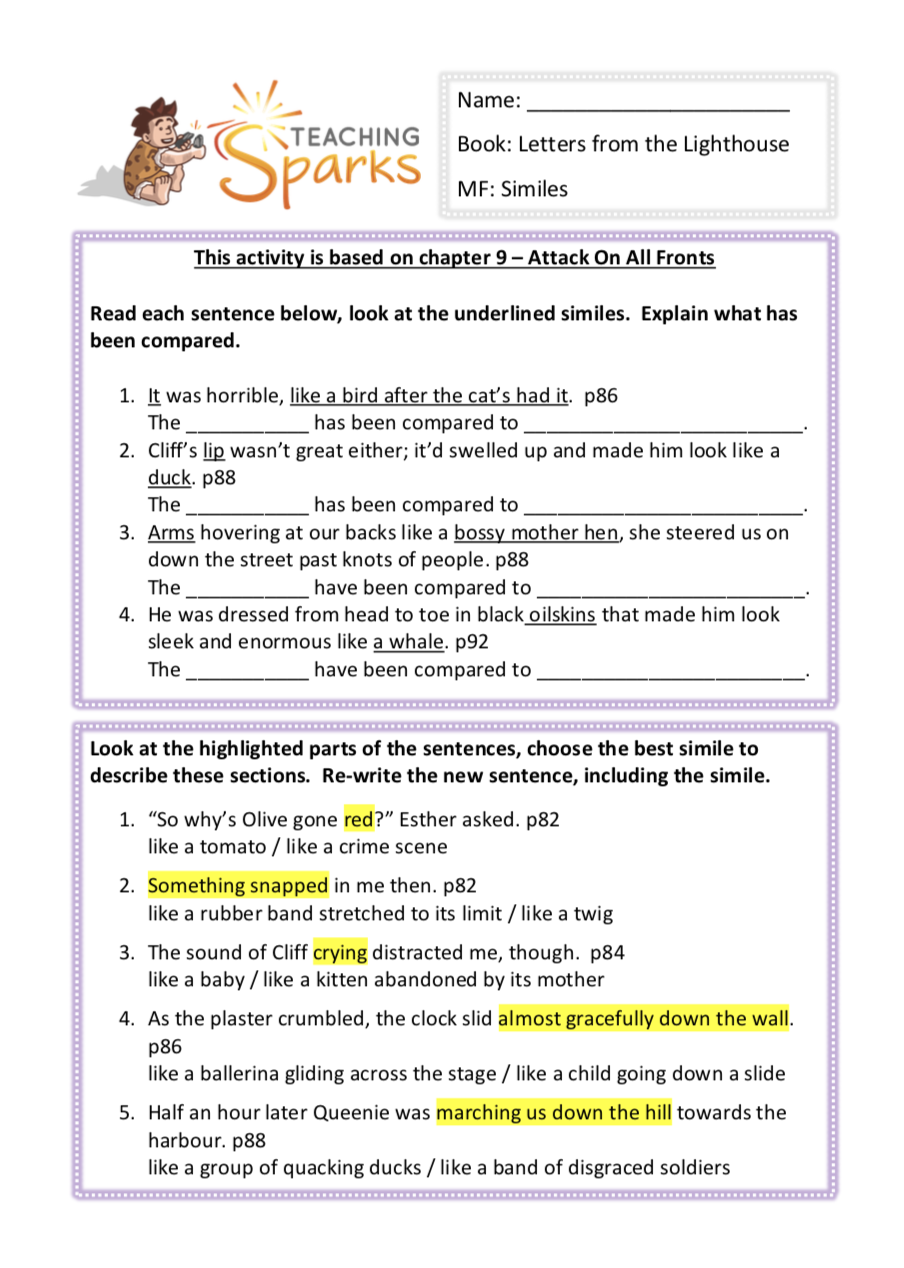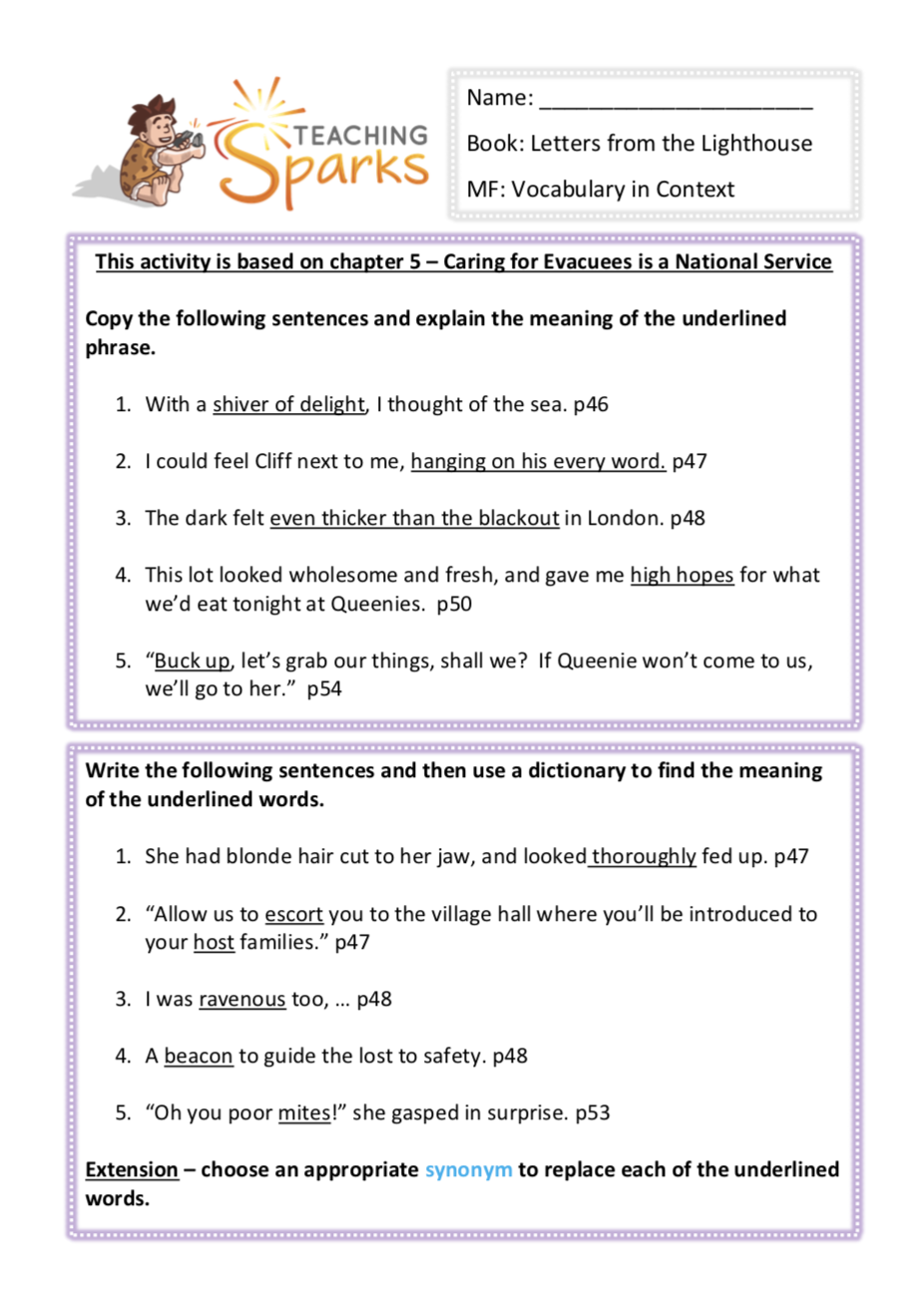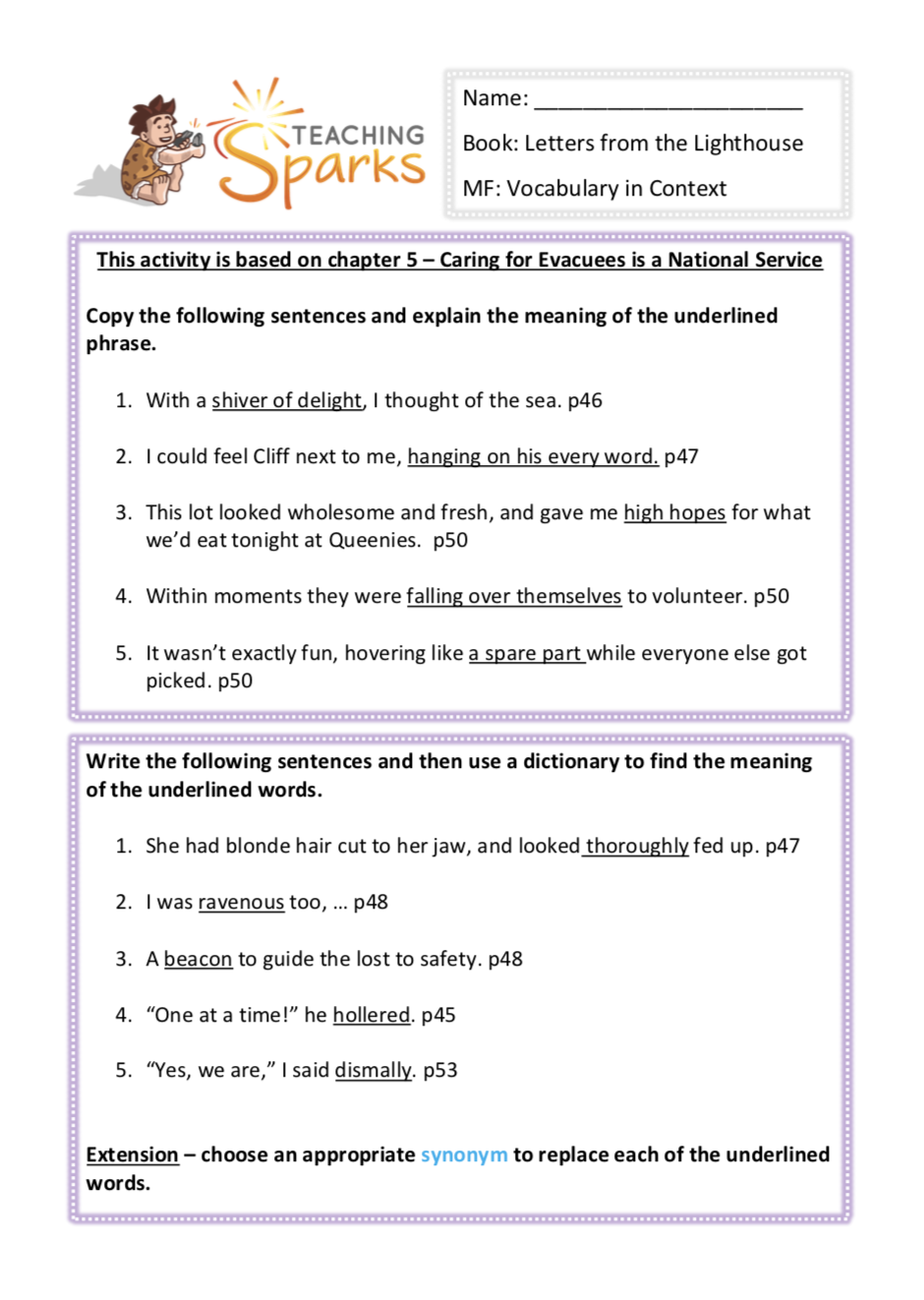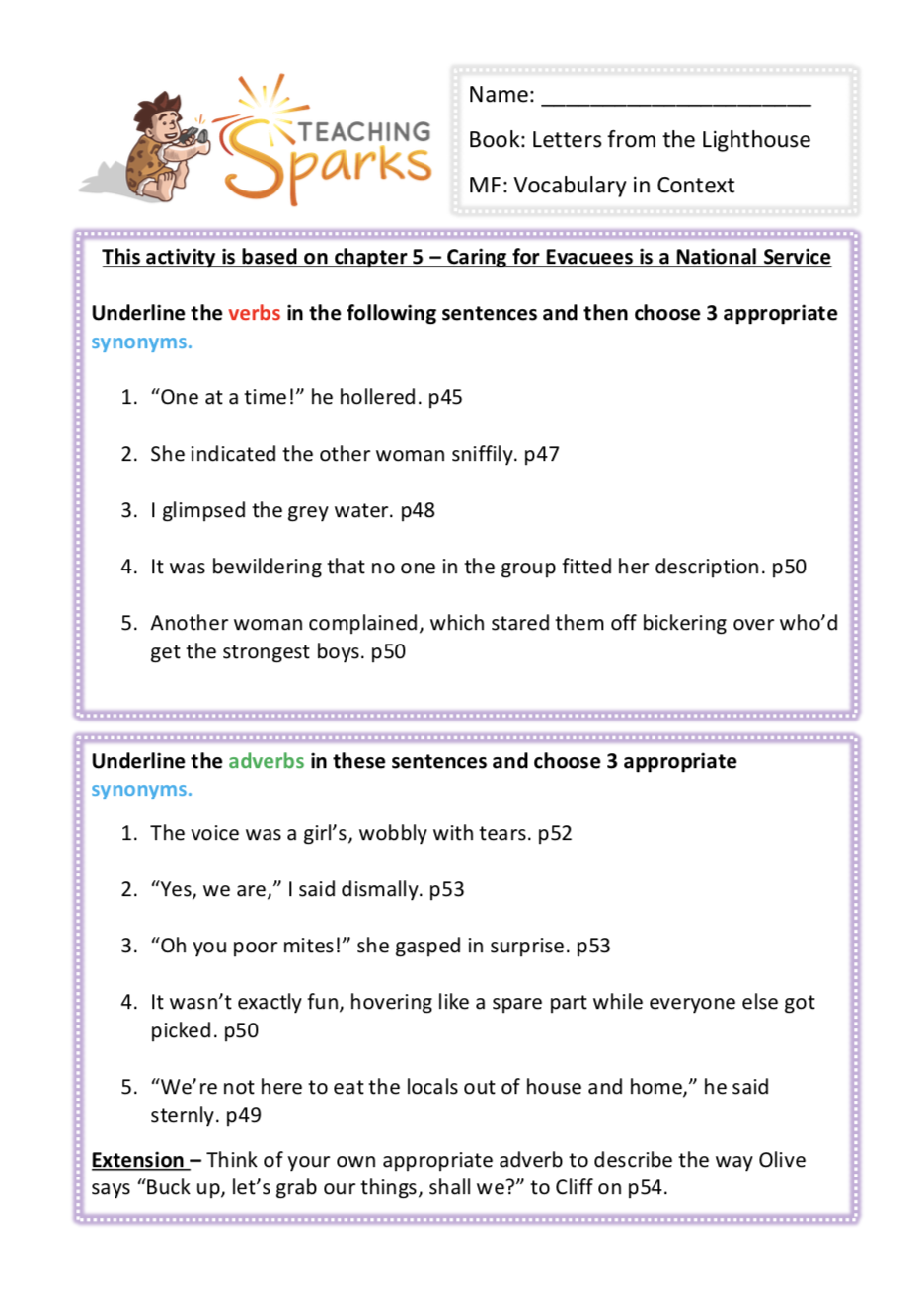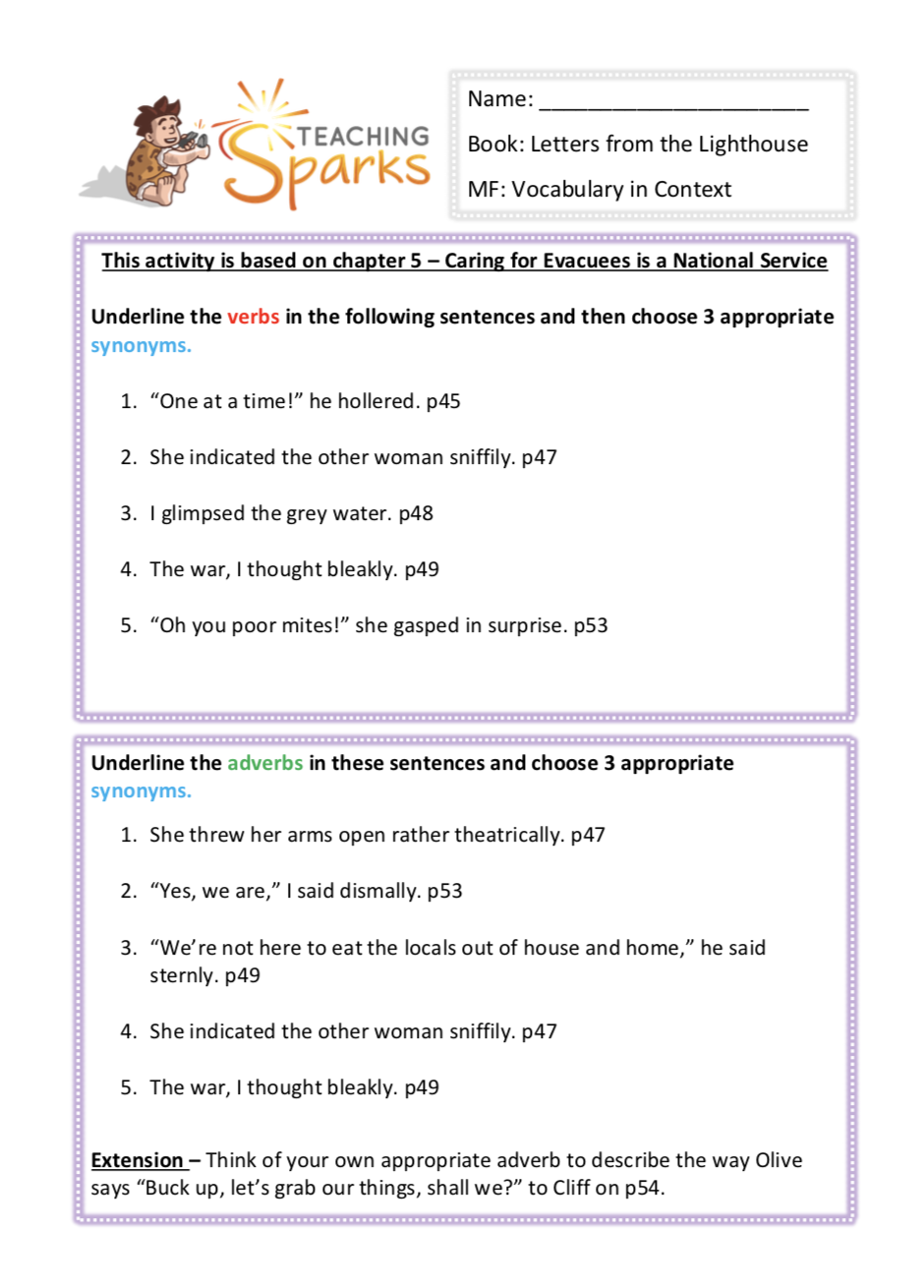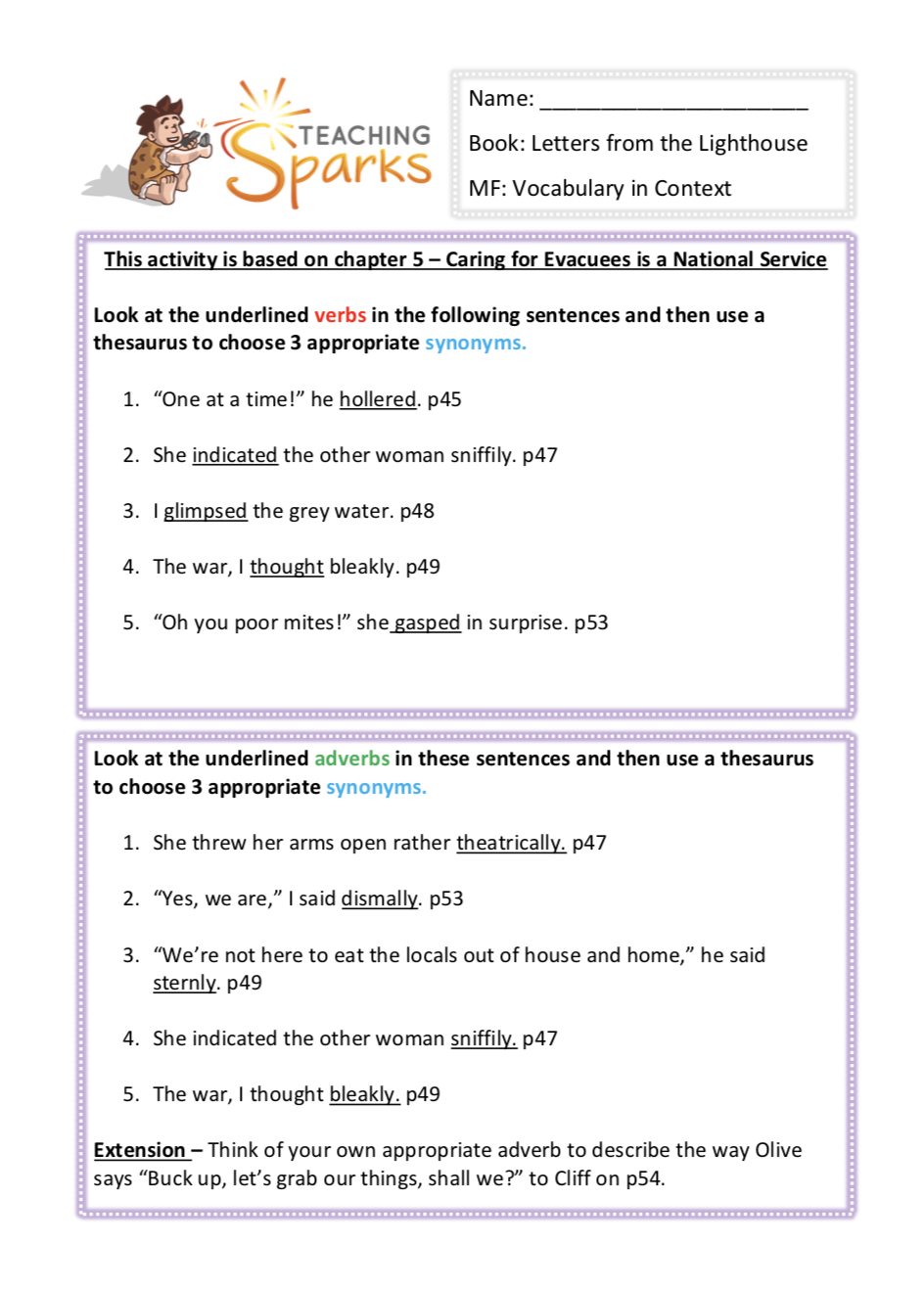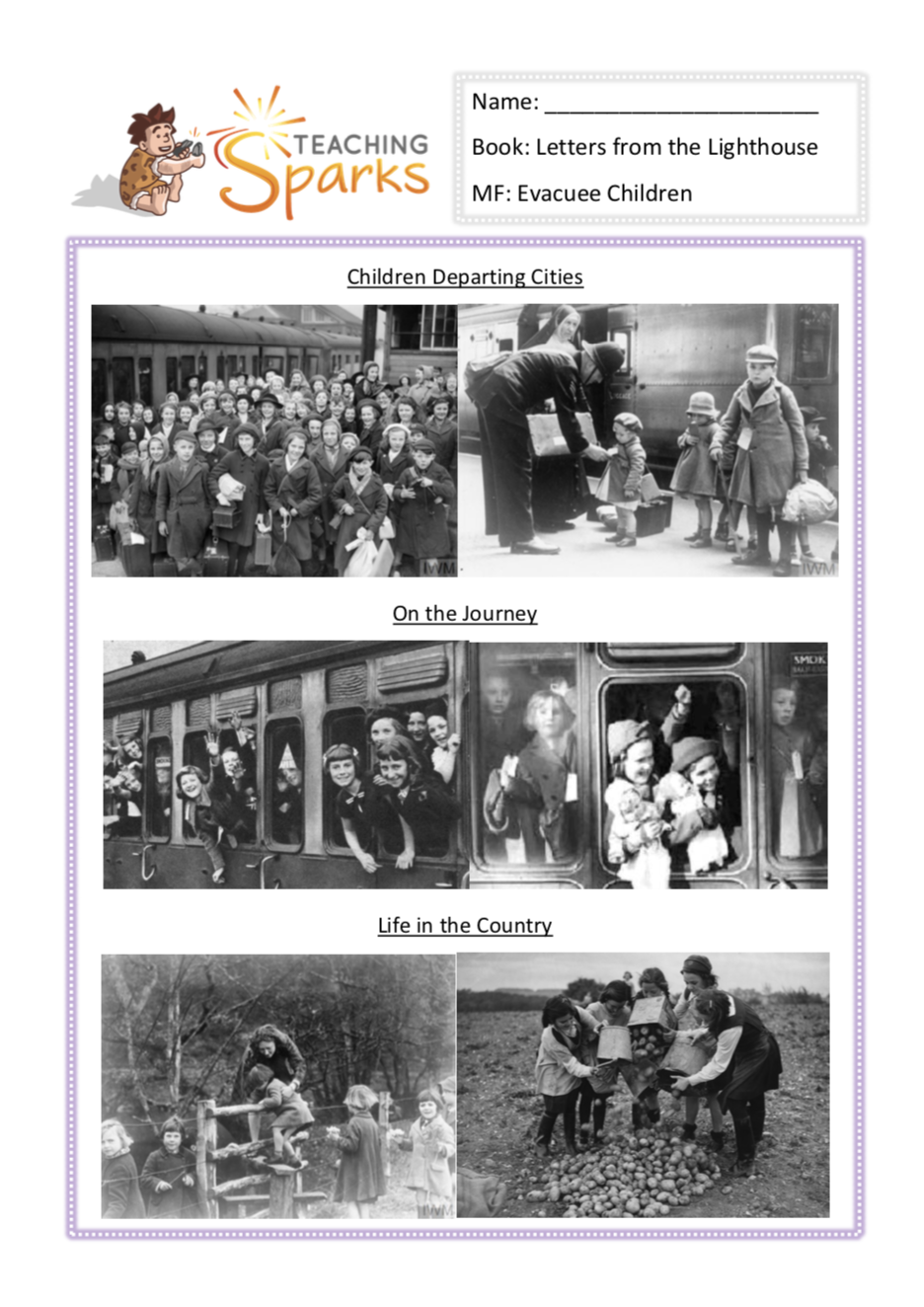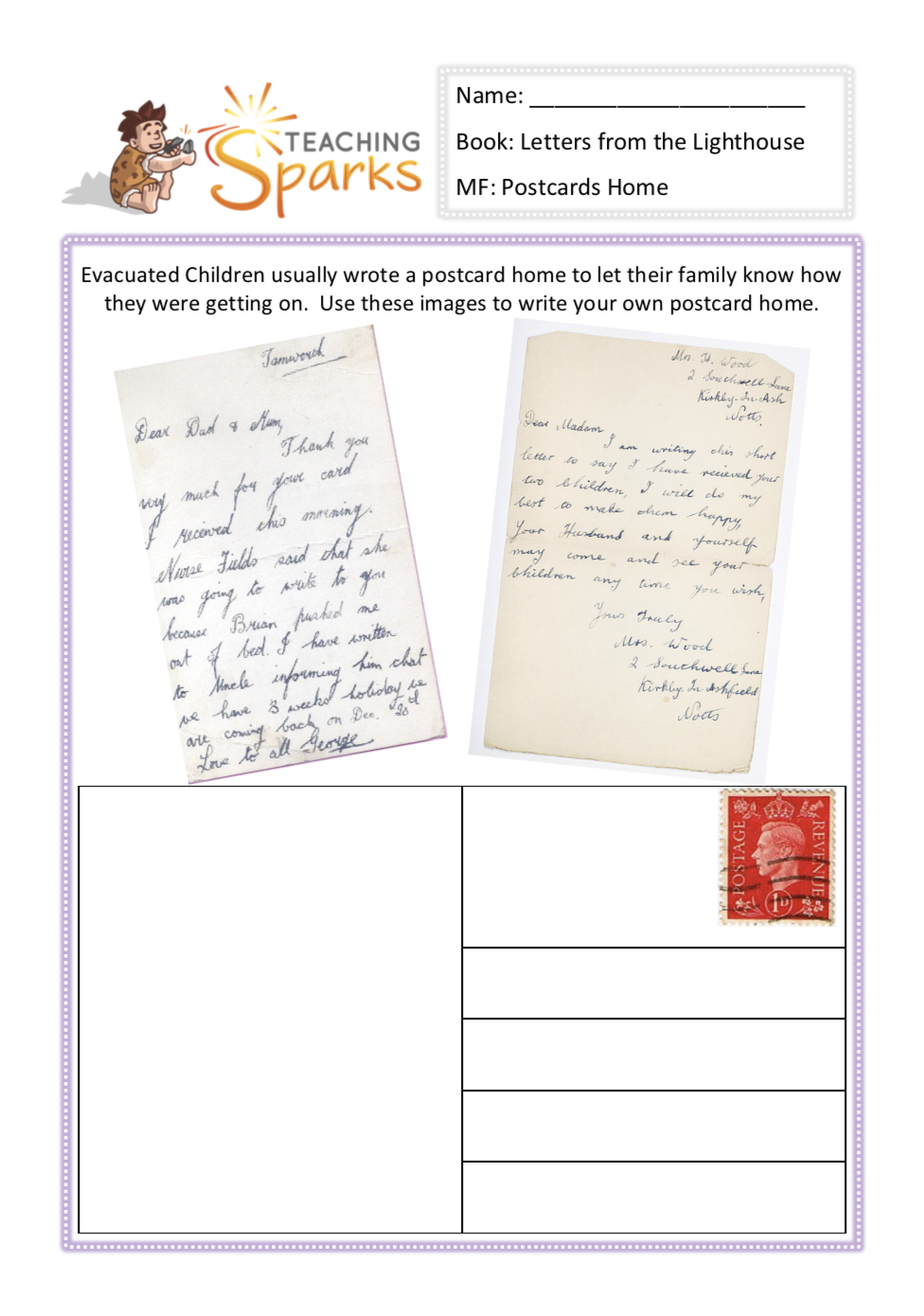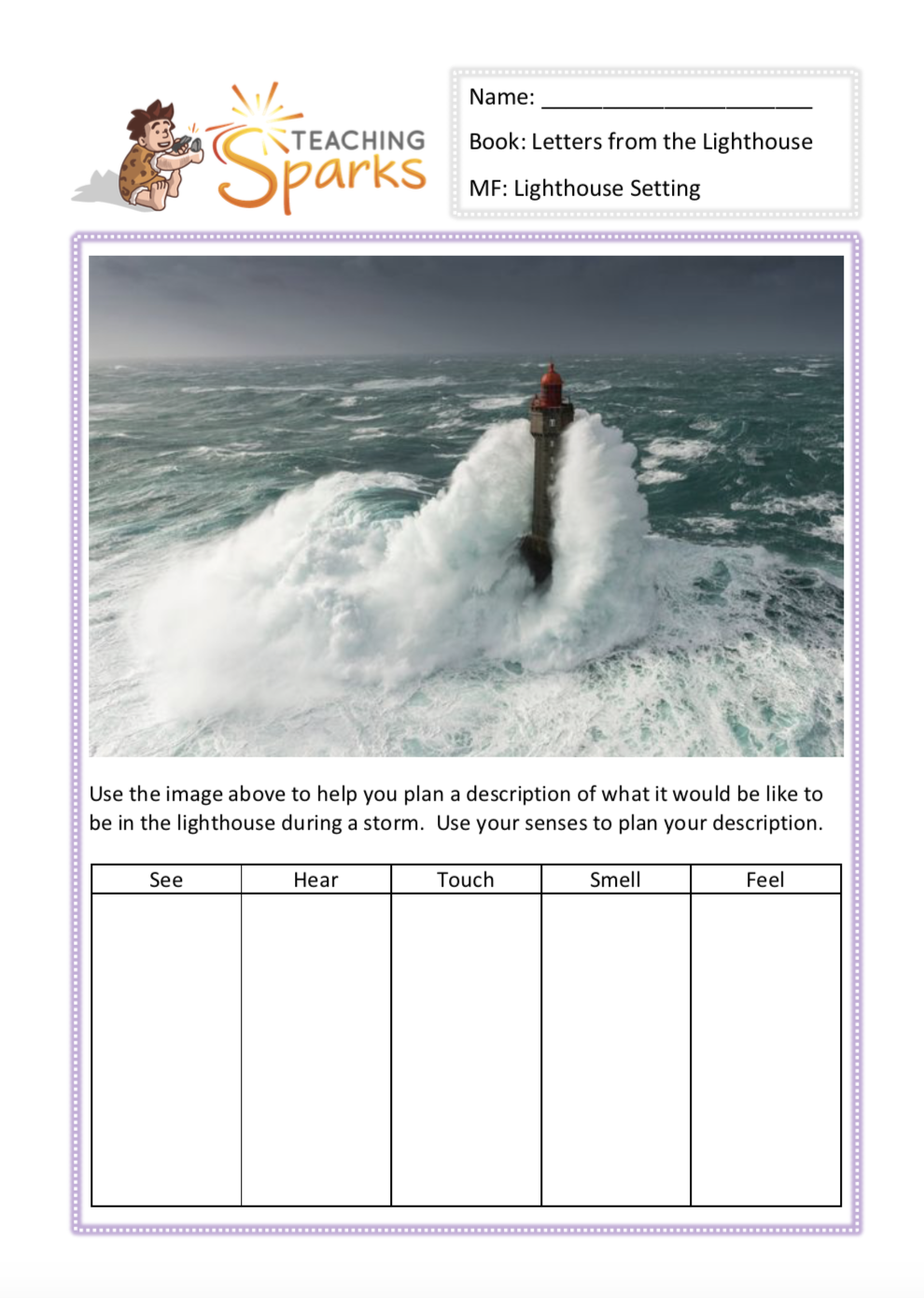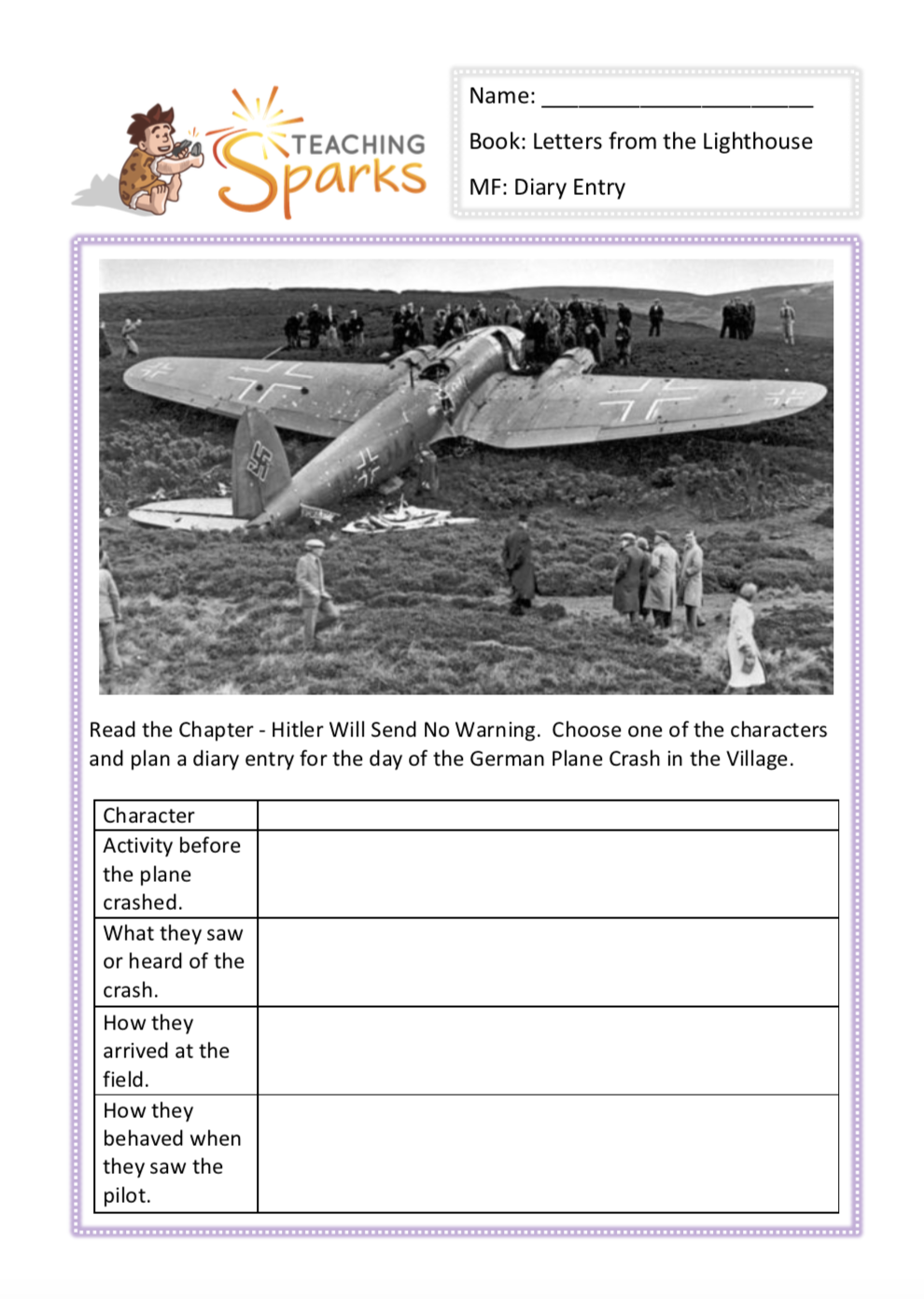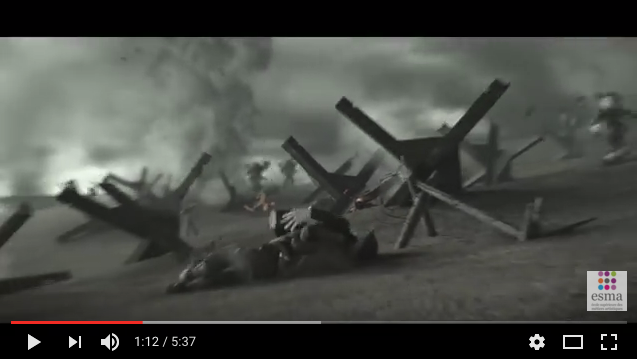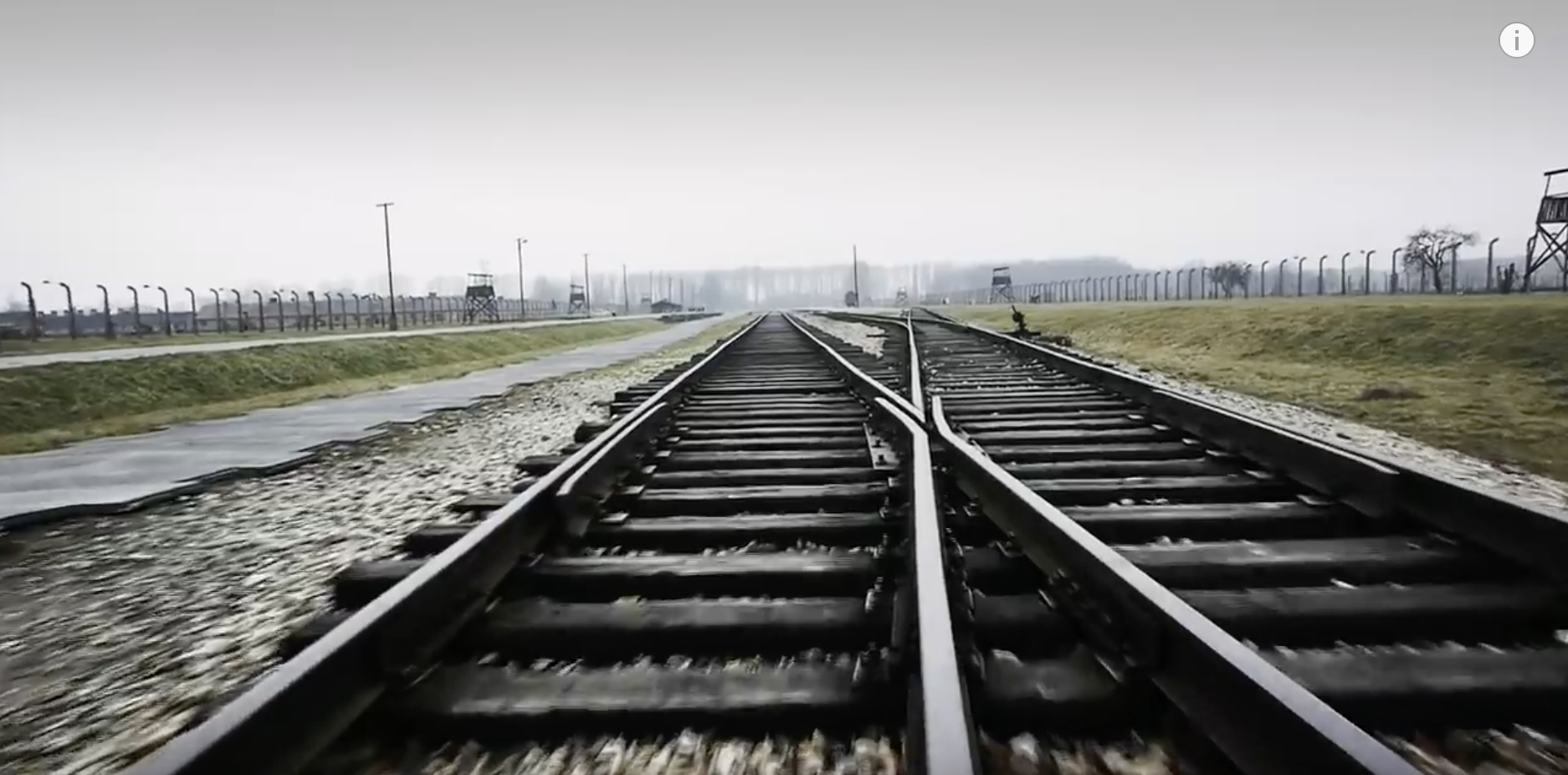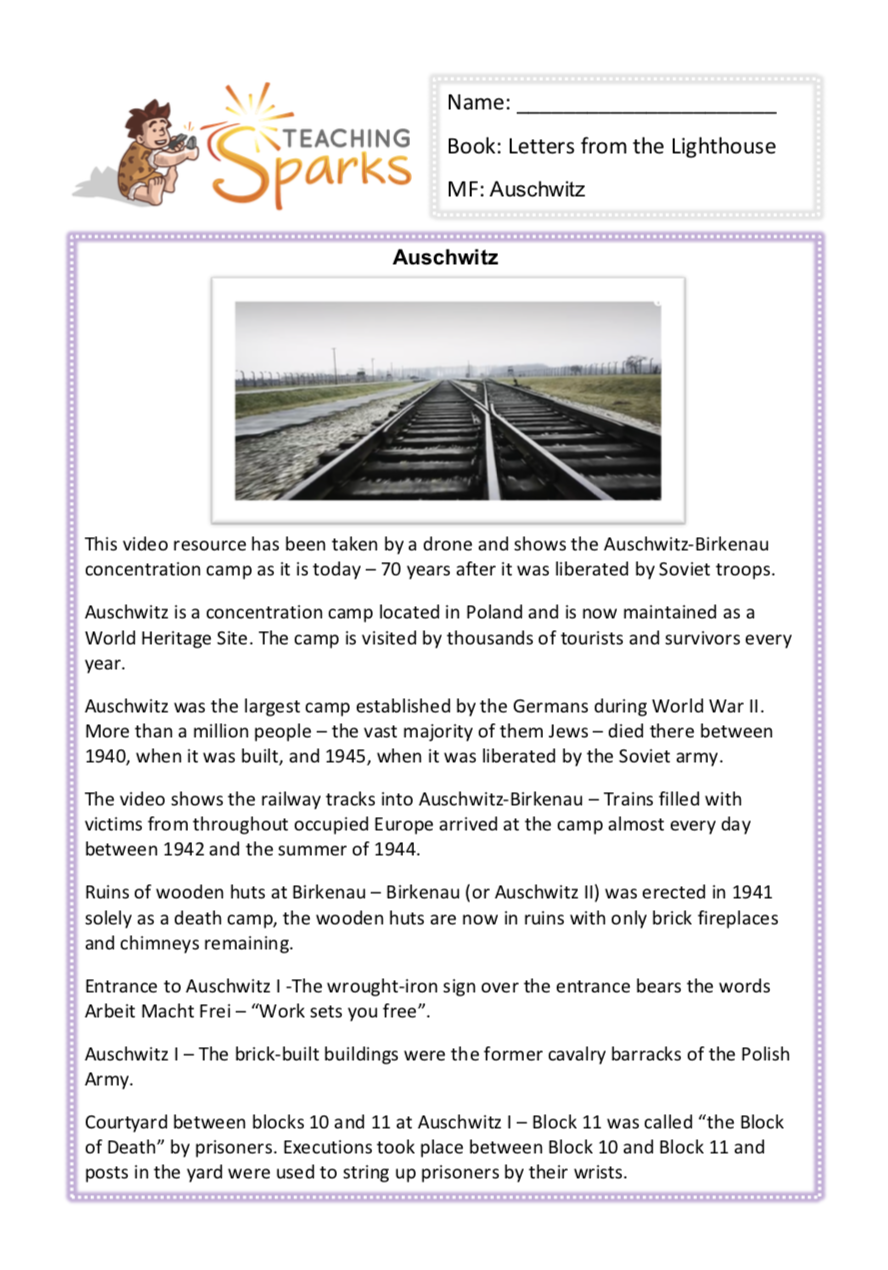Letters from the Lighthouse
Letters from the Lighthouse by Emma Carroll
When Olive and her little brother Cliff are taken to the cinema as a treat by their older sister Sukie they find themselves in the midst of an air-raid, and Sukie, last seen by Olive talking to a young man, has vanished.
This is a well-plotted mystery with plenty of intrigue and a satisfying ending. There is a lot packed in here as an underlying theme of prejudice is woven throughout. This is an excellent addition to the cannon of WW2 literature.
Main Focus: Spelling -ent & -ant
This Year 5 | Year 6 pack focuses on -ant & -ent words used in the story and others from the curriculum.
Your KS2 class will learn spellings of the national curriculum words and using words from chapter 20 and 21, they will complete the sentences and then look more closely at the sentences used in the text that highlight particular -ent / -ant words and write their own variation in the context of the story.
Scroll through the resources and see exactly what your class will be looking at.
Unlock ResourceMain Focus: Colons
This guided reading activity aimed at Year 5 | Year 6 focuses on chapter 1 of the book Letters from the Lighthouse and is linked to using colons.
Your KS2 children will have the opportunity to punctuate the text using colons and also identify when a colon has been used accurately.
The resource is printable and is differentiated five ways.
Unlock ResourceMain Focus: Comprehension
This is a fantastic comprehension resource linked to chapter 19 of Letters from the Lighthouse and breaks down different types of questions from the categories: vocabulary, retrieval, inference and comparisons.
Breaking down your comprehensions into questions is a great strategy to use when pinpointing areas for development with the children in your Year 5 / Year 6 class.
Check out all the guided reading resources for this comprehension.
Unlock ResourceMain Focus: Non-Fiction Comprehension
In the year before the start of World War Two, 10,000 children fled Hitler’s Germany to the safety of the UK. They travelled by specially organised trains and boats. Their parents were not allowed to stay with them.
When they arrived, some stayed with foster families and some stayed in hostels. To get to the UK each child had to have a sponsor – to pay for everything they needed.
This is a great comprehension resource that gives your class a brief overview of kinder transport, kristallnacht, Refugee Children’s Movement and more…
Your Ks2 class will then use this information to answer the comprehension questions based on: retrieval, inference and vocabulary.
Unlock ResourceMain Focus: Report of Events
For this guided reading task you will need to read chapter 16 – Hitler Will Send No Warning from Letters from the Lighthouse with your Year 5 / Year 6 class.
This resource is aimed at UKS2 touches on the sequence of events, character quotes, giving explanations from the perspective of the officer, adverbials of time, recounts and more…
Your children will be asked to step into the shoes of different characters and give statements from their perspective.
Unlock ResourceMain Focus: Similes
This resource is based on chapter 9 – Attack On All Fronts and focuses on the similes used in the book.
Your Year 5 / Year 6 children will look at identifying similes and improving sentences by creating similes based on the information given.
Unlock ResourceMain Focus: Vocabulary & Word Class
This is a great resource that can accompany chapter 5 – Caring for Evacuees is a National Service from the Letters from the Lighthouse book.
Your children will be challenged to find synonyms of words used in the story, identify verbs and adverbs, look up definitions and provide explanations to terms and phrases.
Unlock ResourceExtras
This pack includes a few extra resources to accompany the story and the topic.
It has resources on Evacuee Children, Postcards Home, Diary Entry and Lighthouse Setting.
Unlock ResourceWorld War 2 - Short Film
Discussion points:
1. Why did the director of the film choose to begin the story showing the eye of the soldier?
2. What did this get across?
3. Highlight the different sounds they could hear at the beginning.
4. Did they see any items that they don’t feel should have been there?
5. What happened when a soldier had fallen?
6. Letter to Home appeared.
7. Discuss the voices in the animation.
8. Talk about the contrast when the story came back to the house.
9. Discuss the feelings relived for the grandfather as he read the letters. The letters could be notes he kept for himself or letters from fallen allies.
Main Focus: Auschwitz
This resource accompanies the video clip above and it introduces your class to the largest Nazi concentration camp Auschwitz, located in southern Poland.
This resource can be used alongside the clip as discussion points.
Unlock Resource
